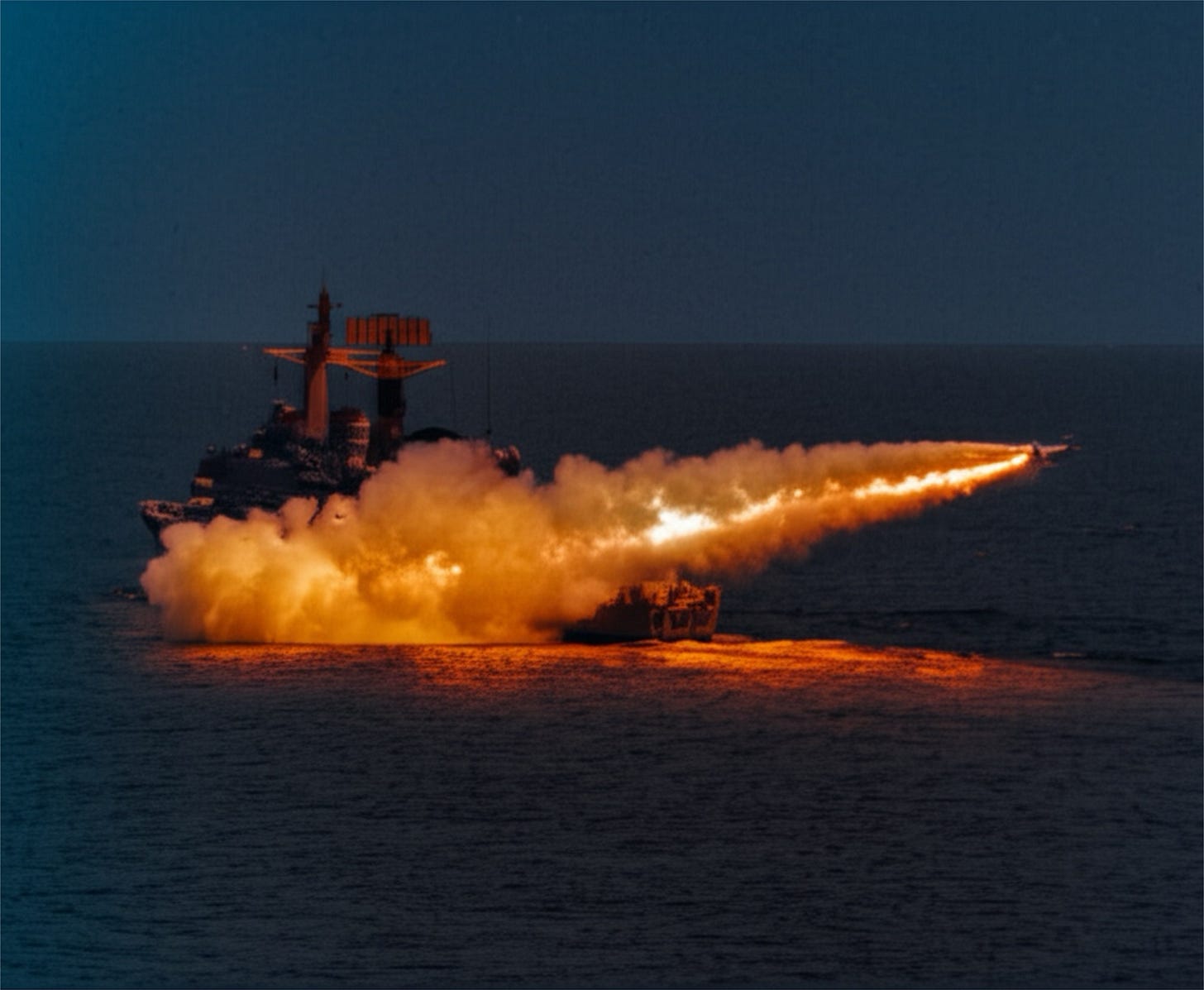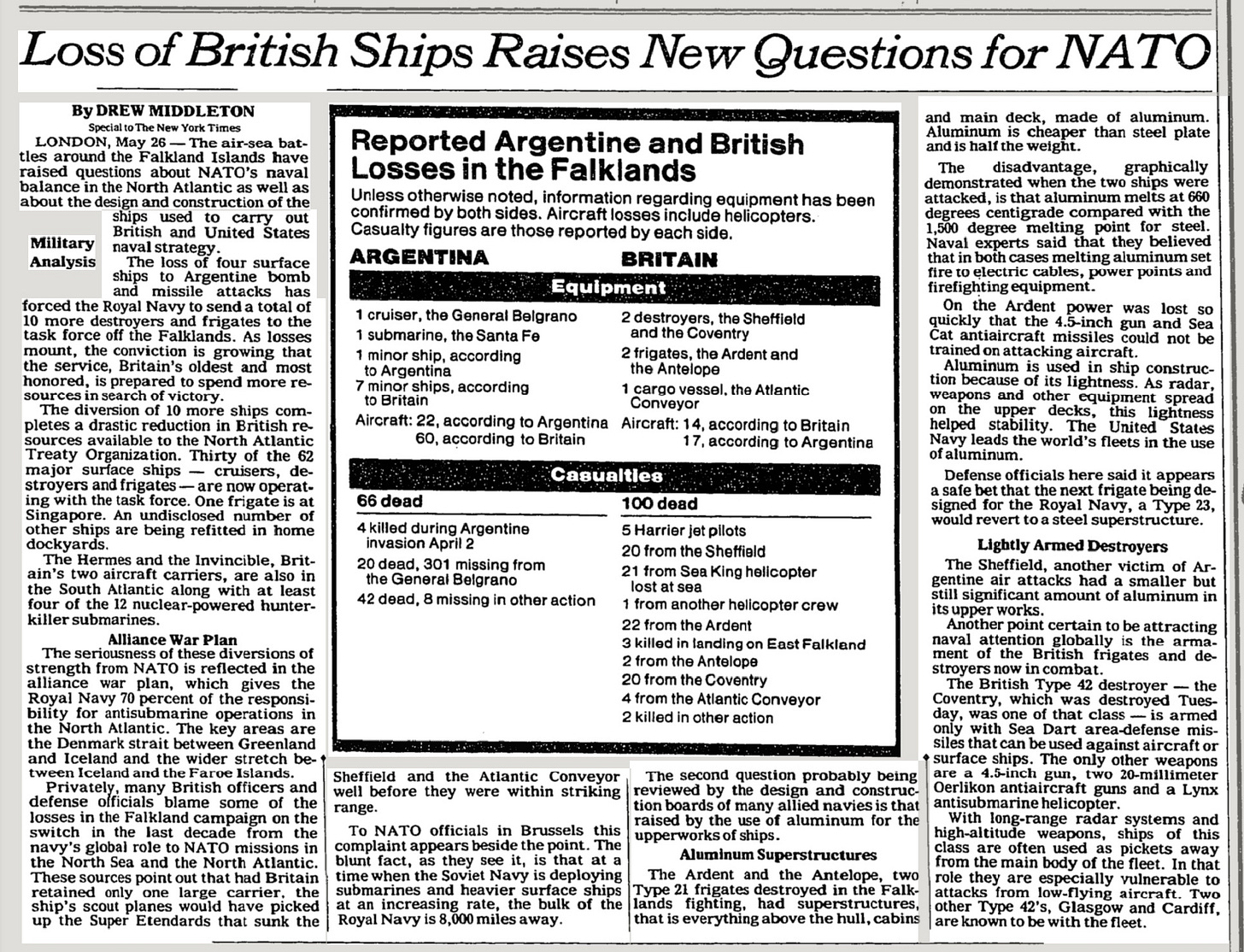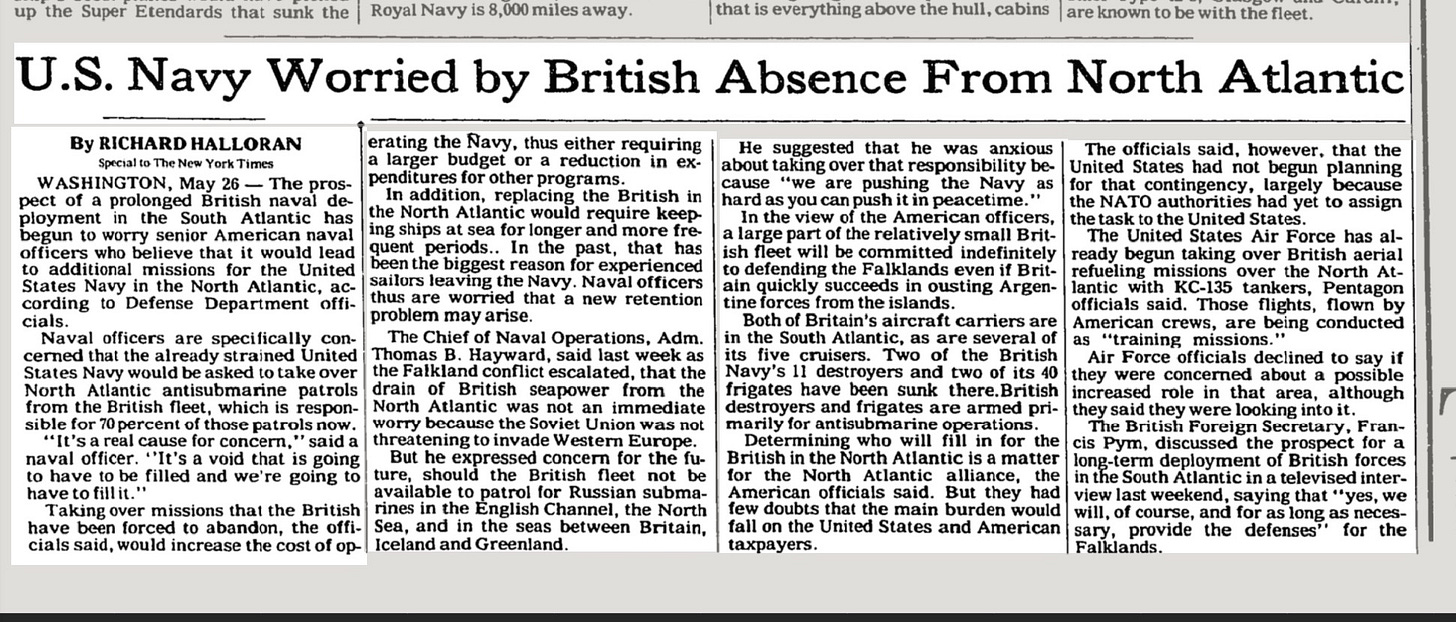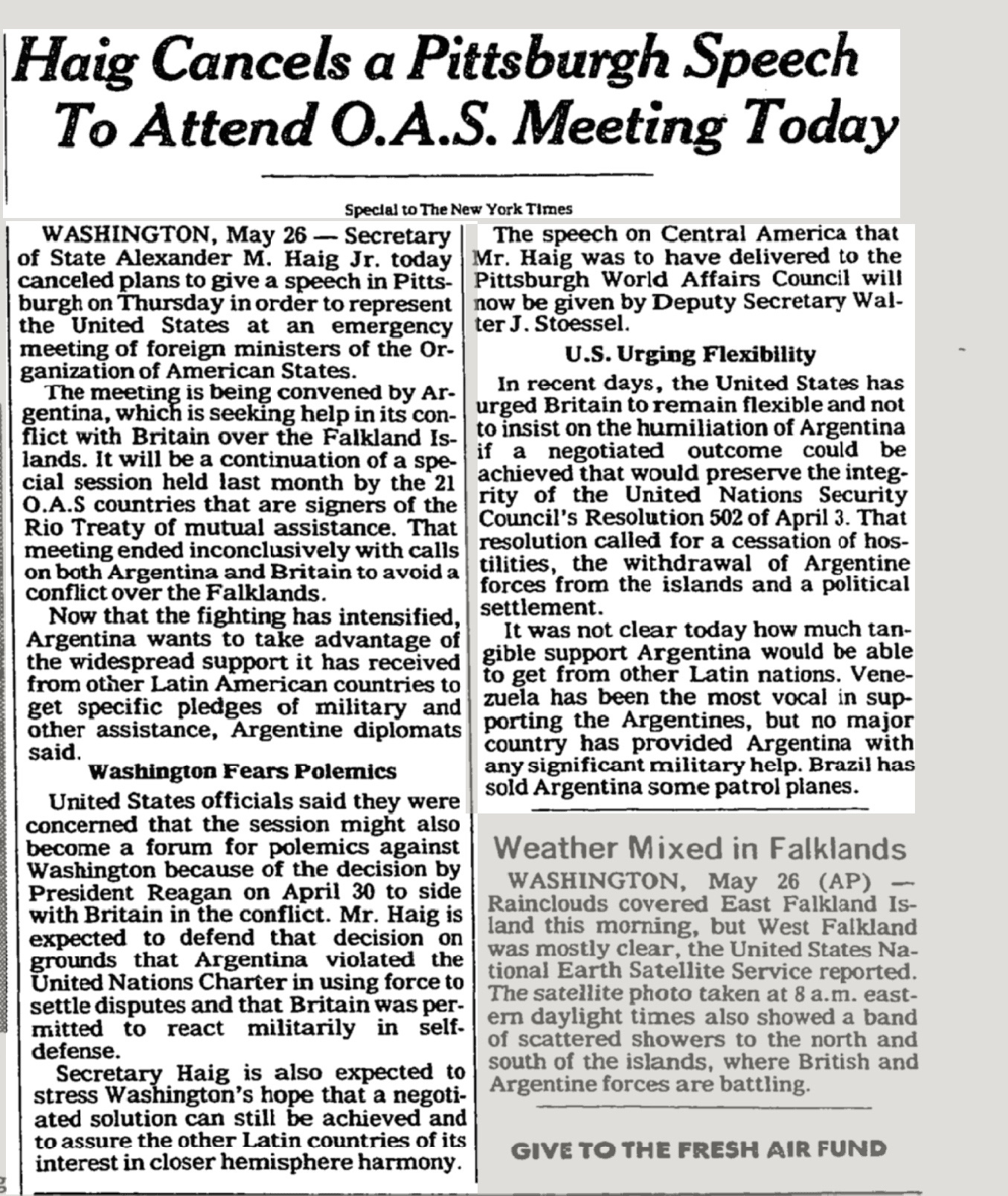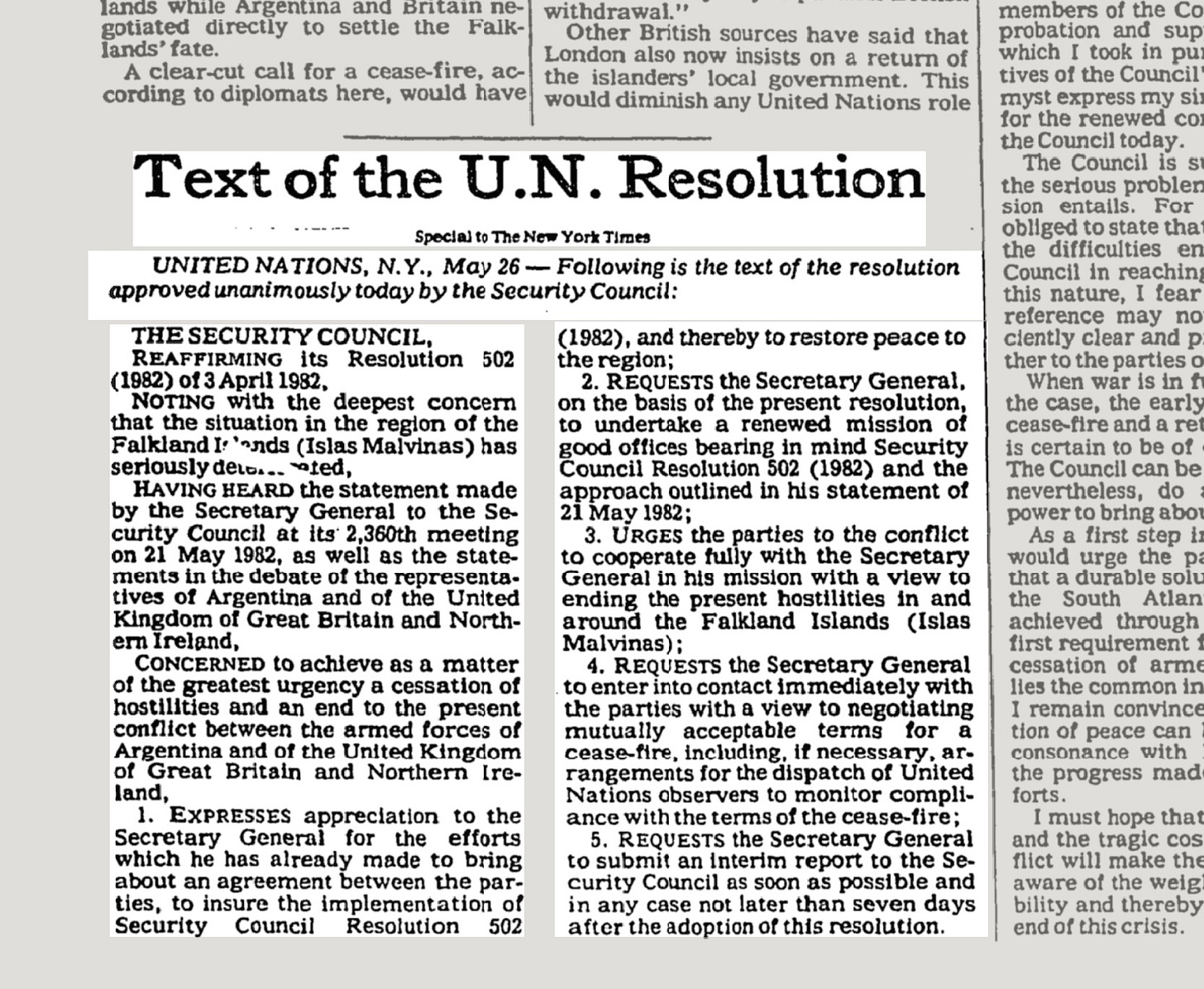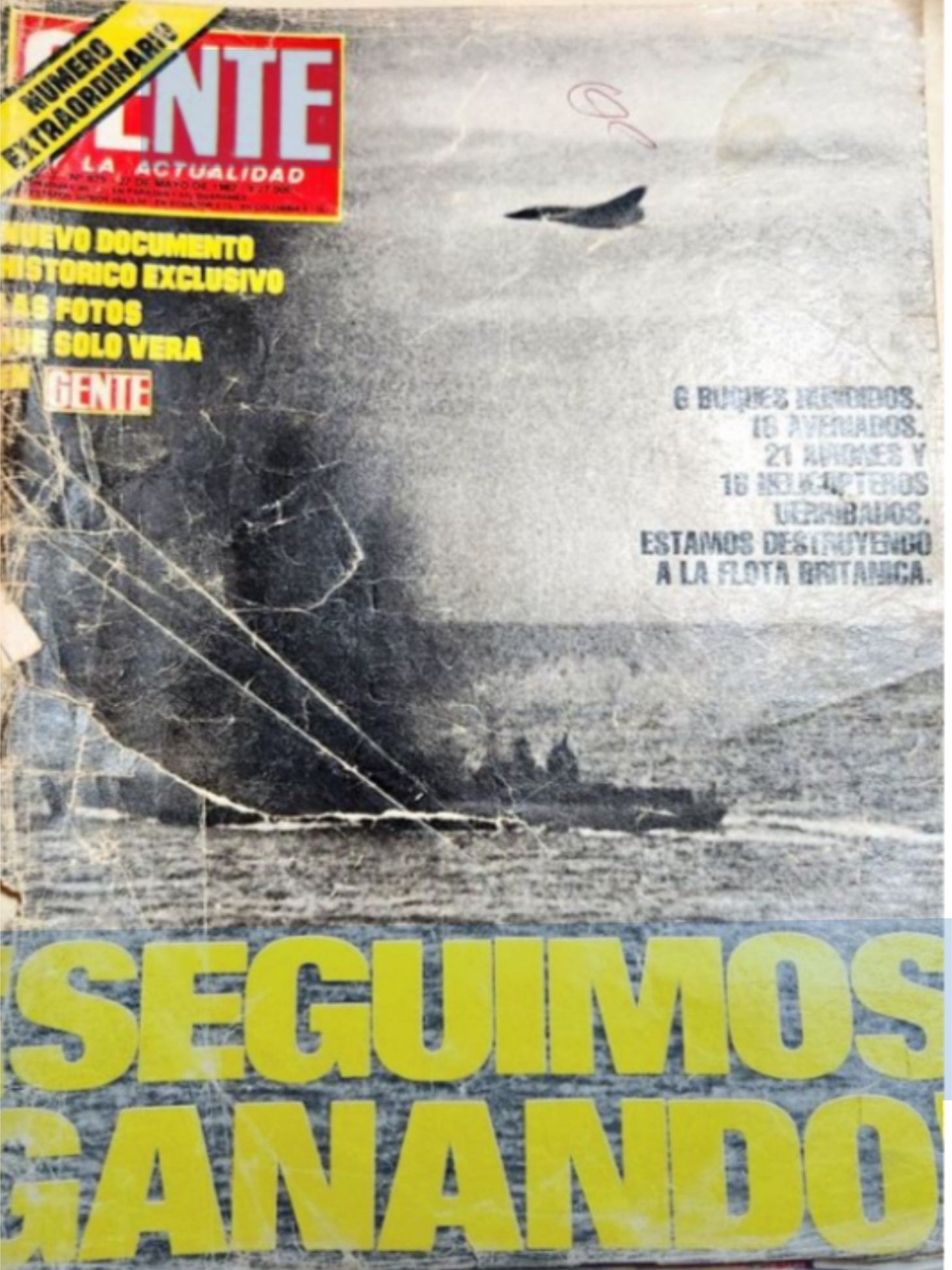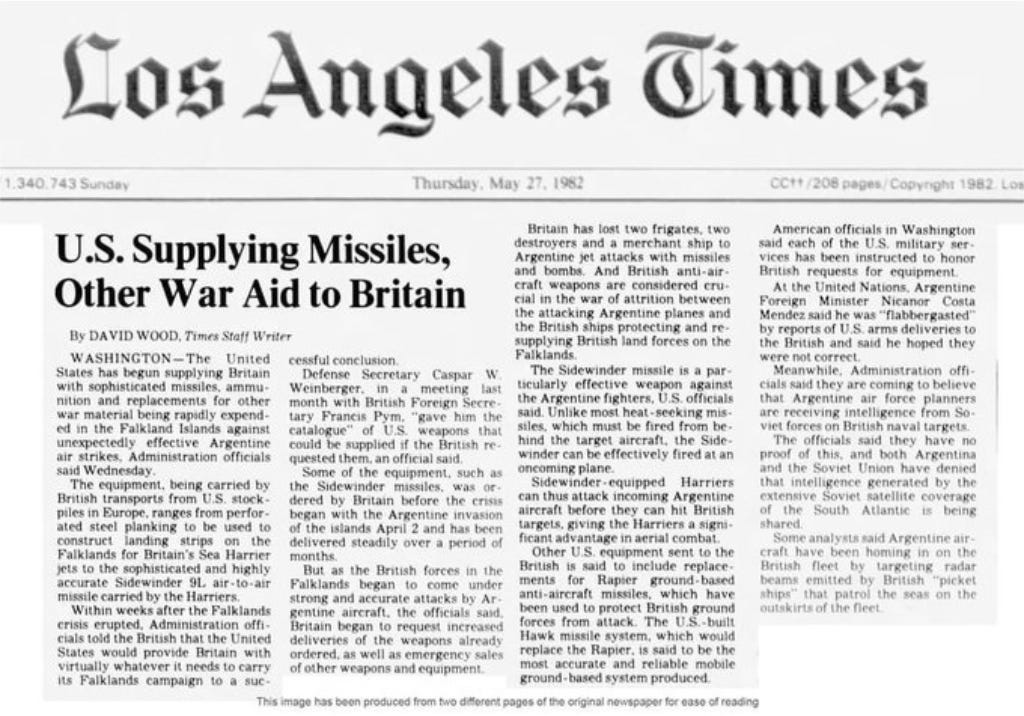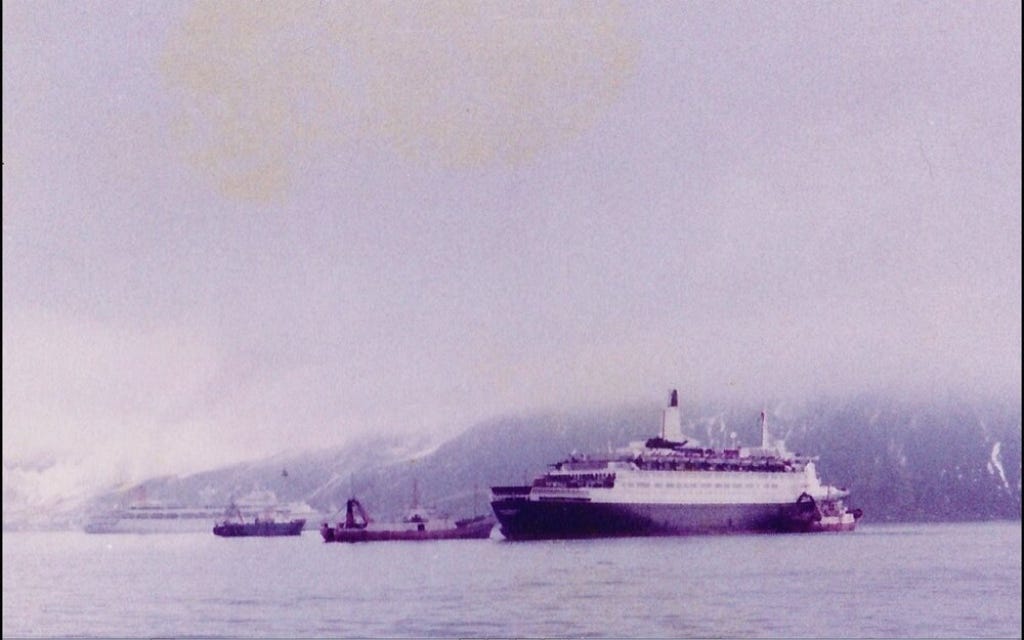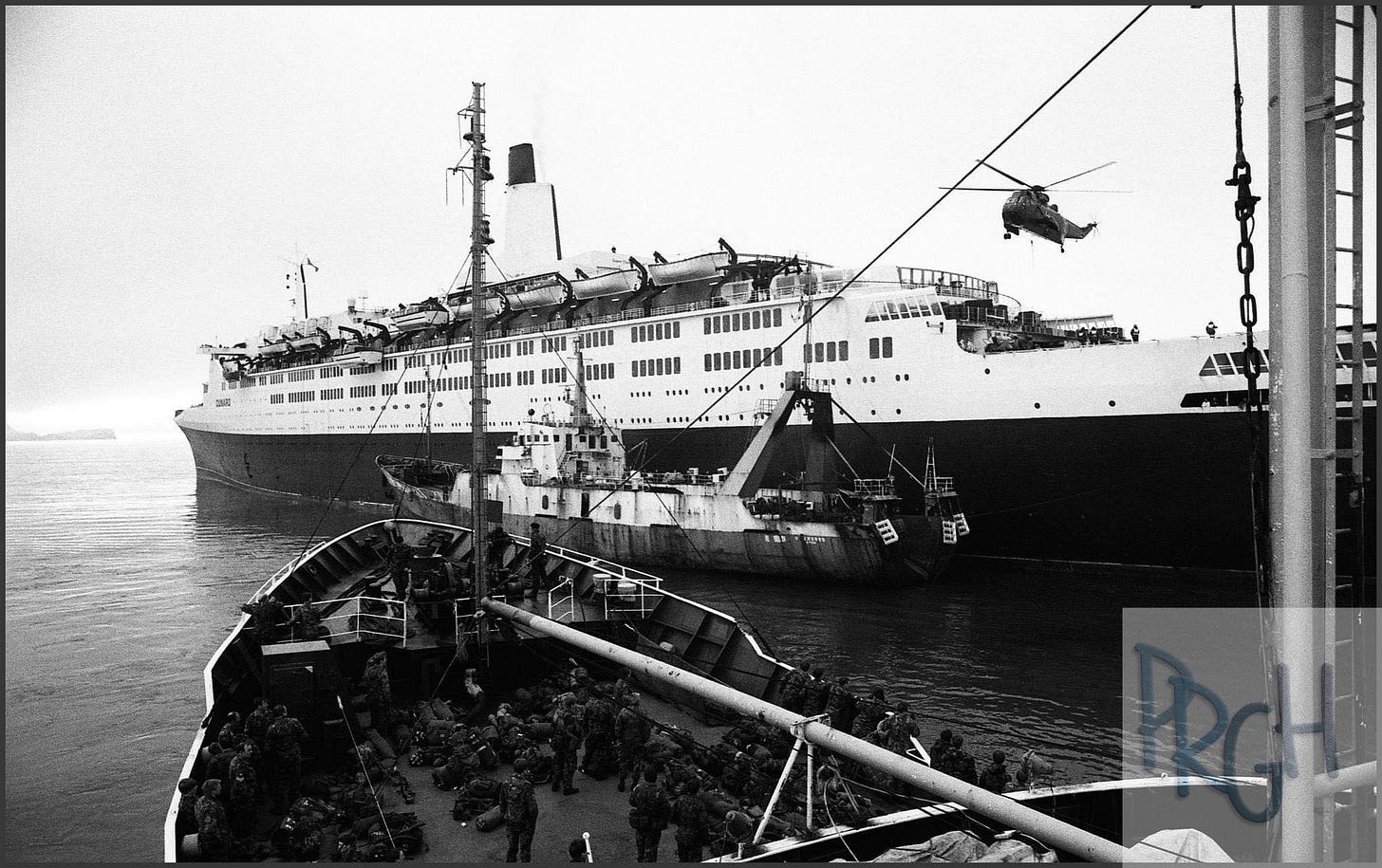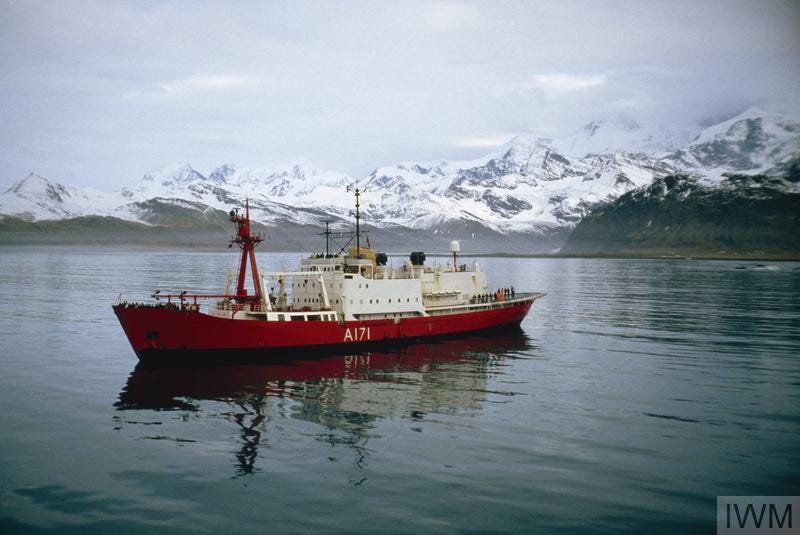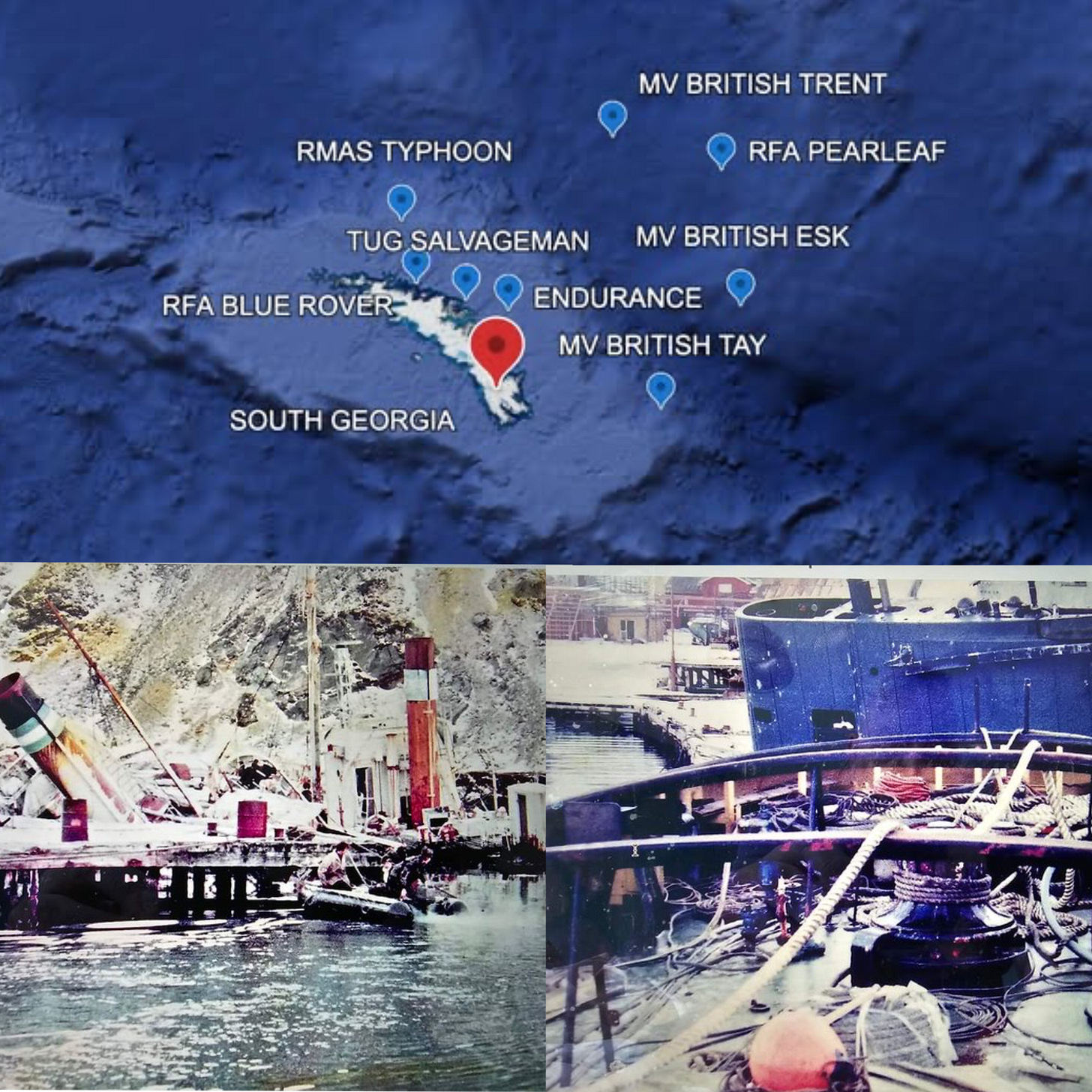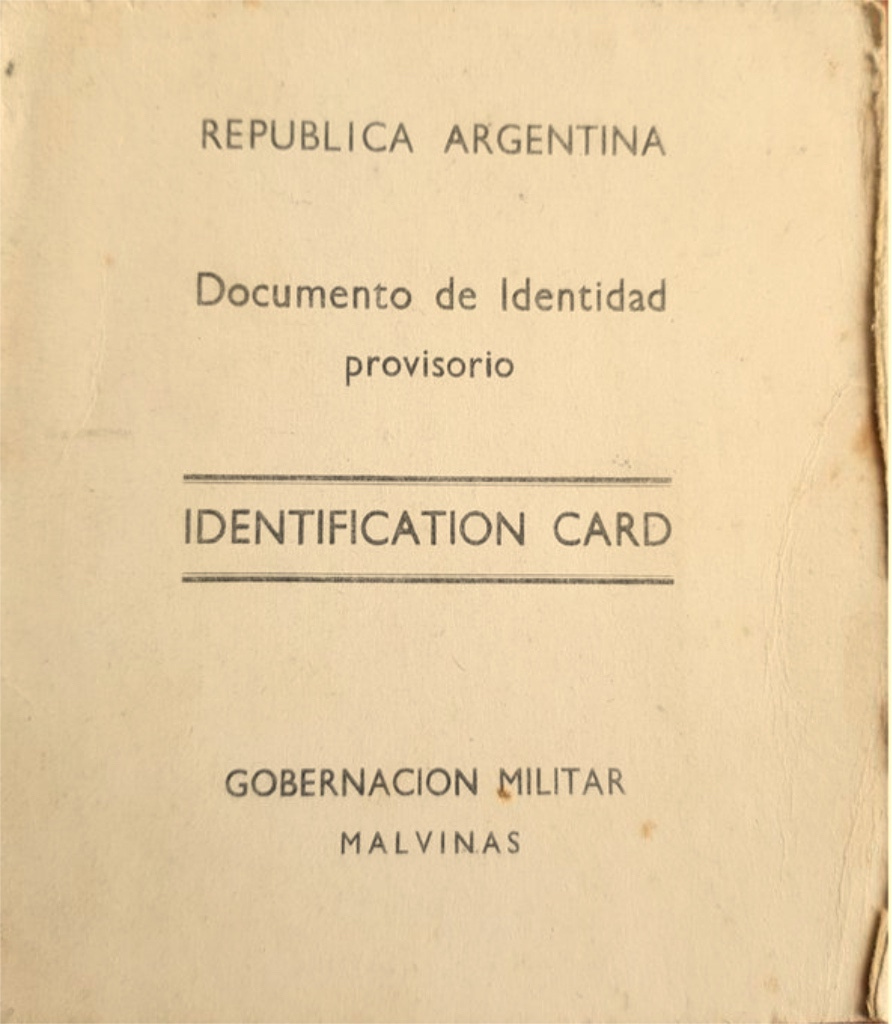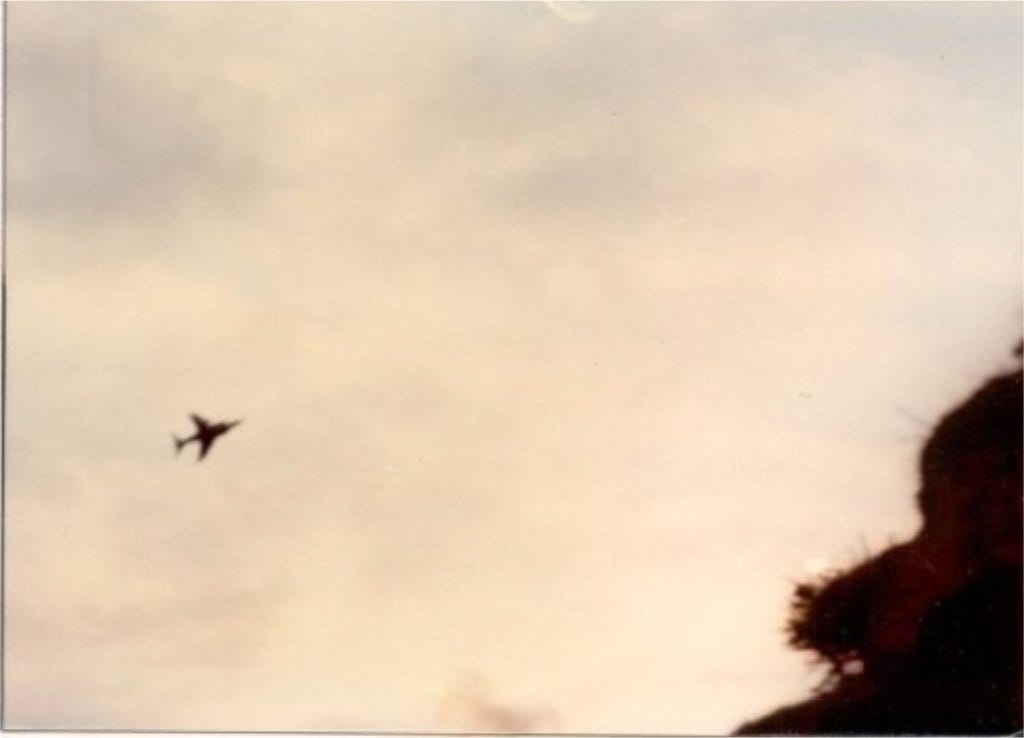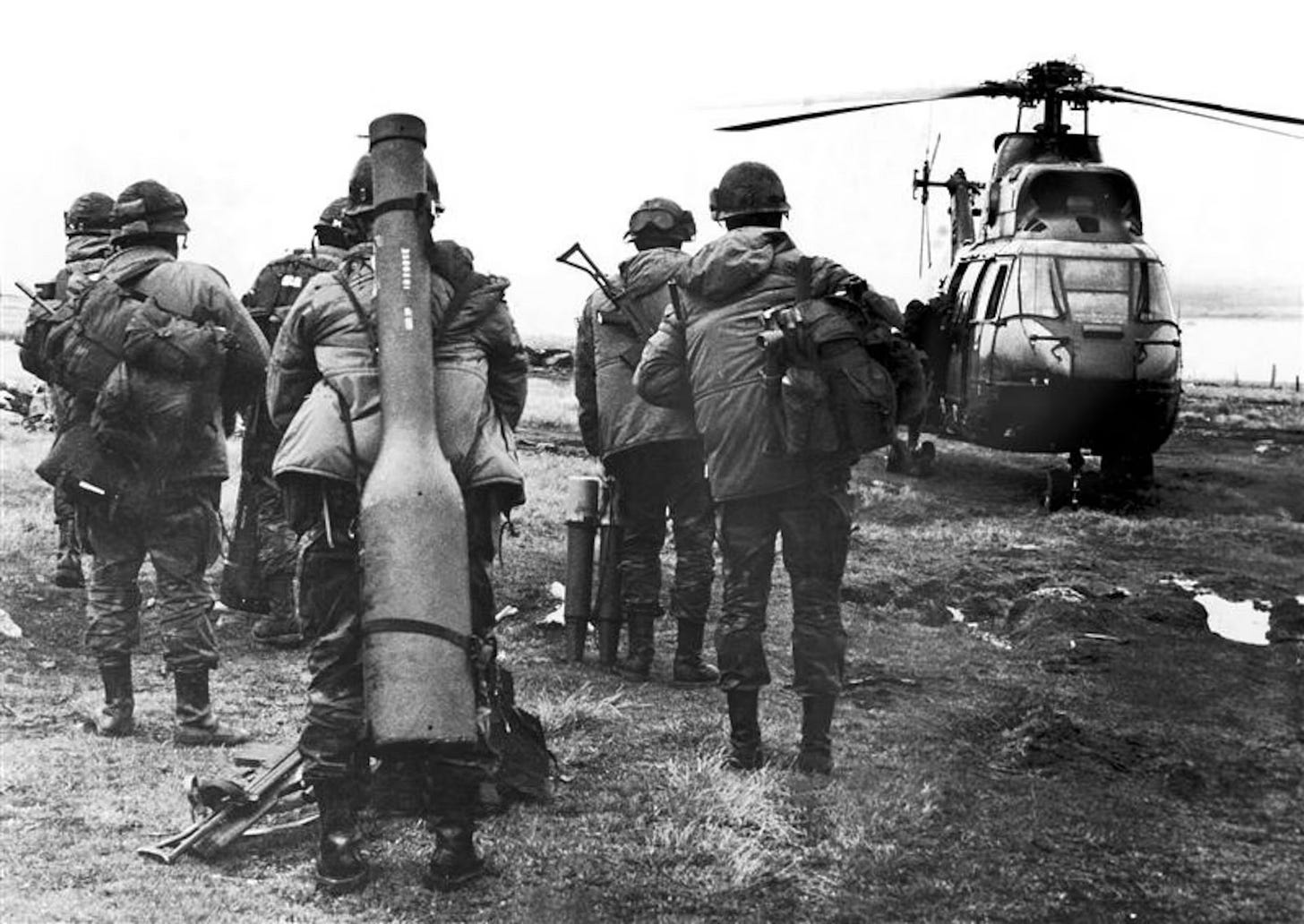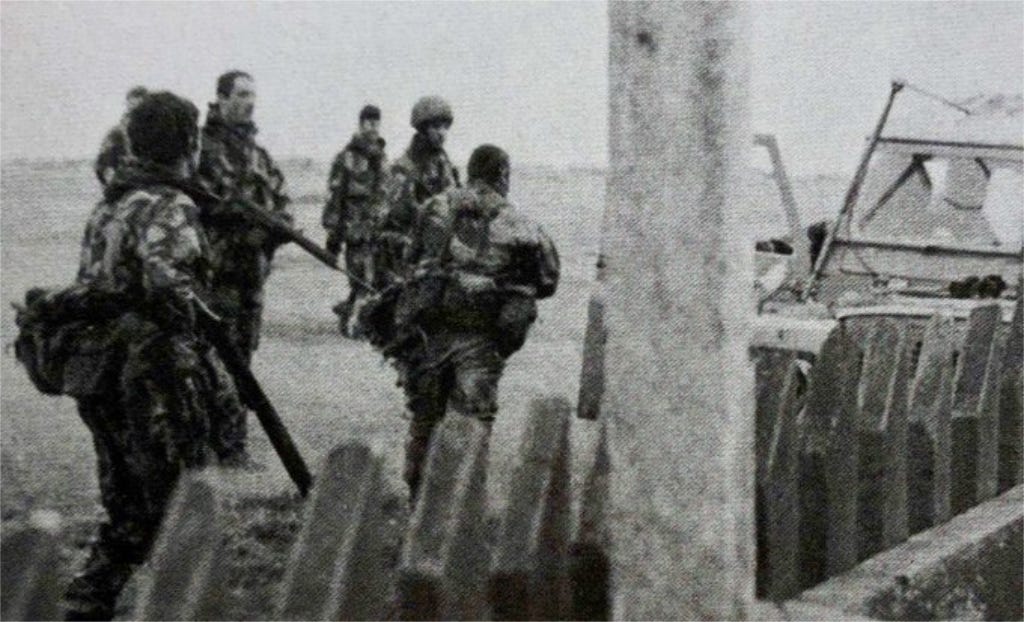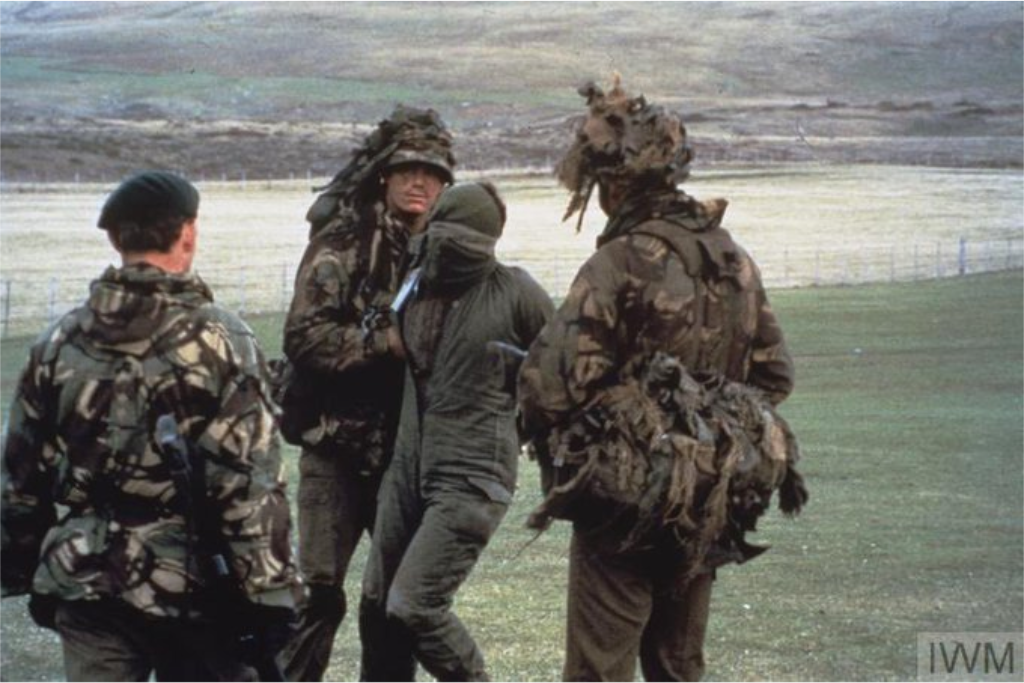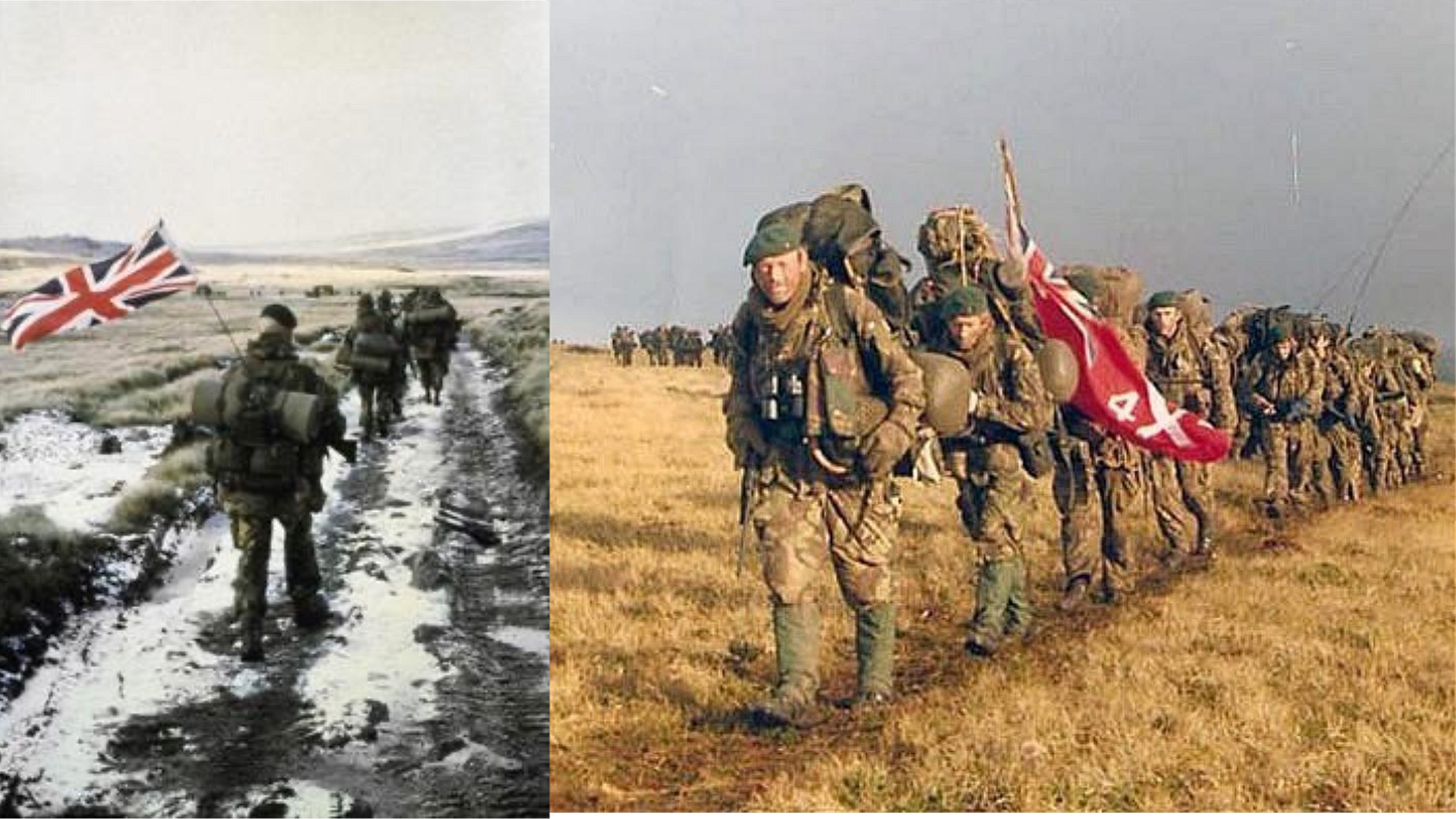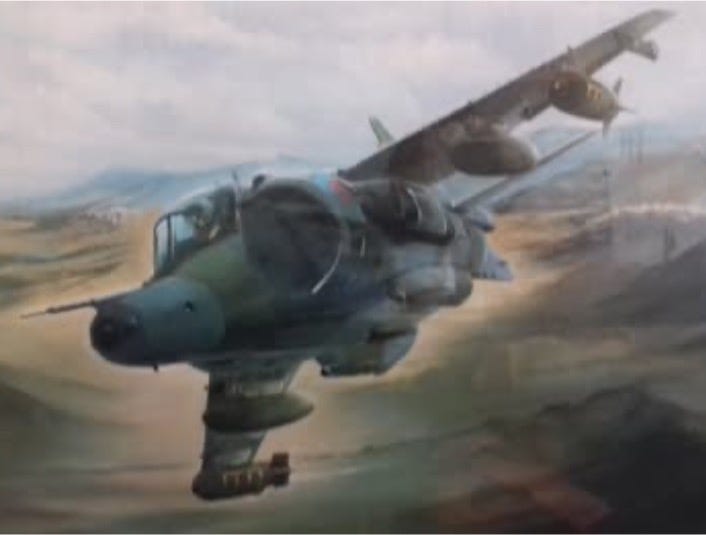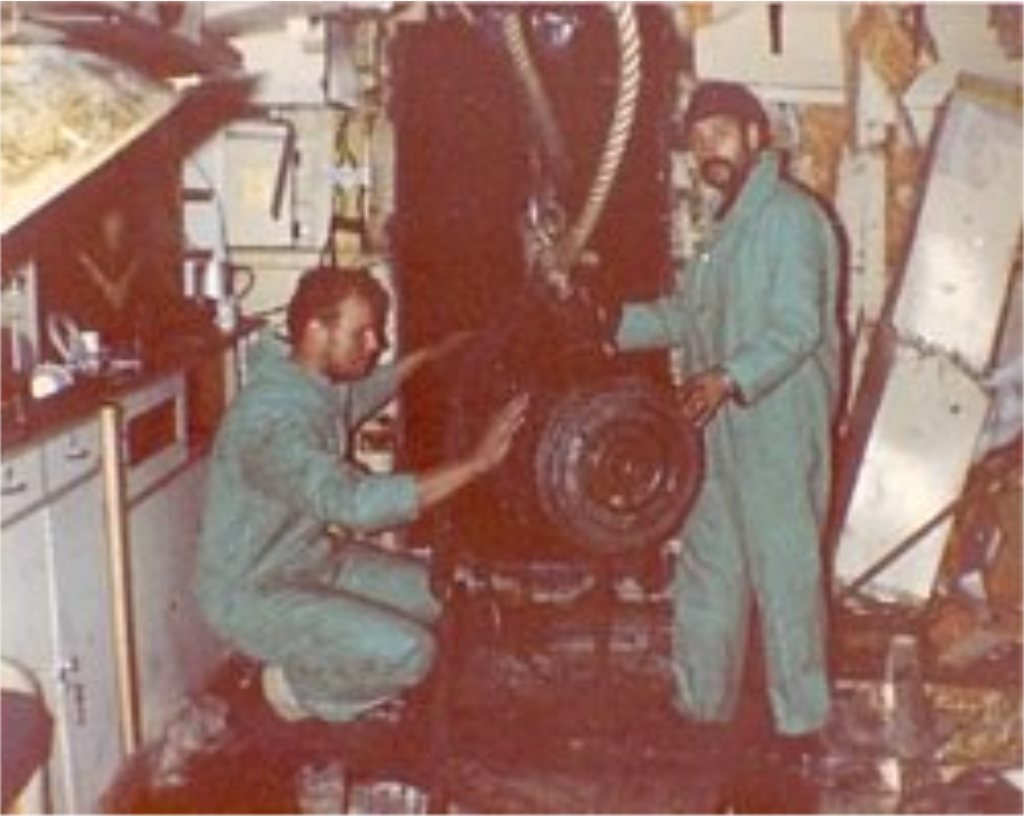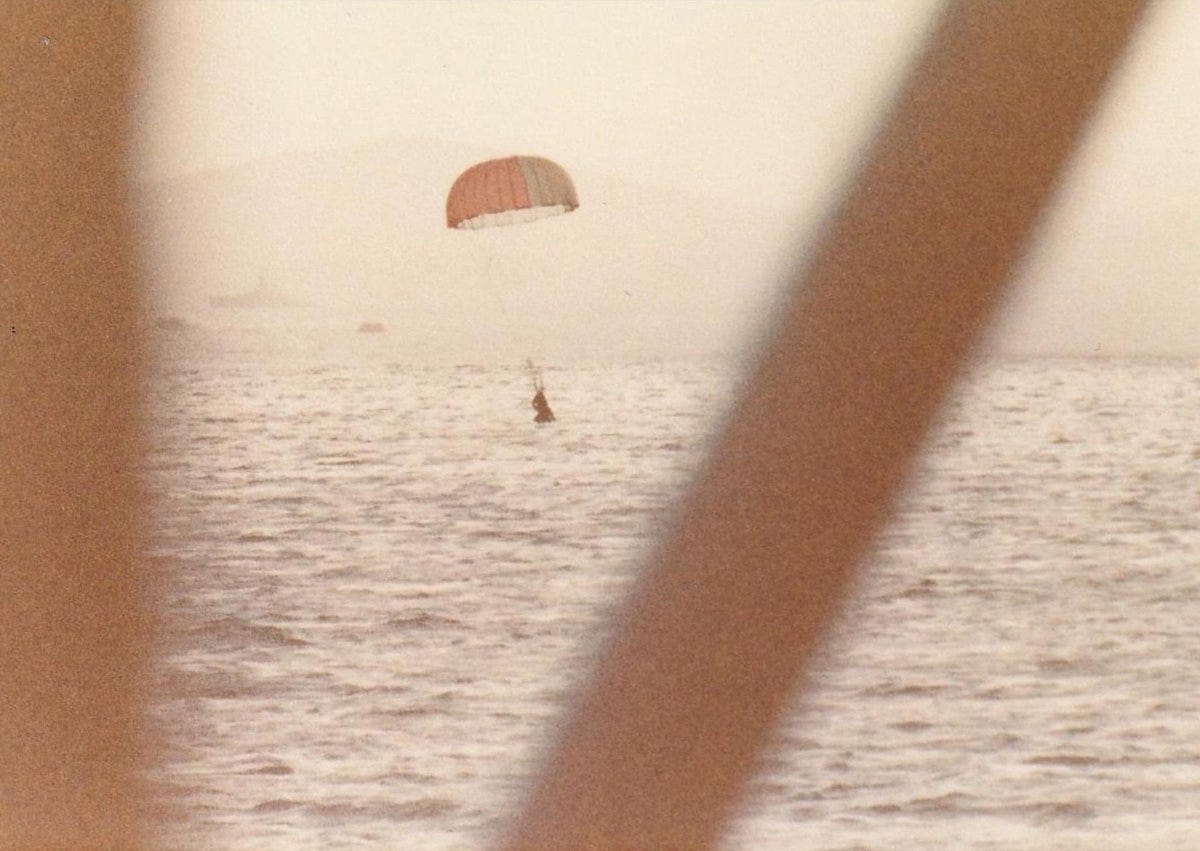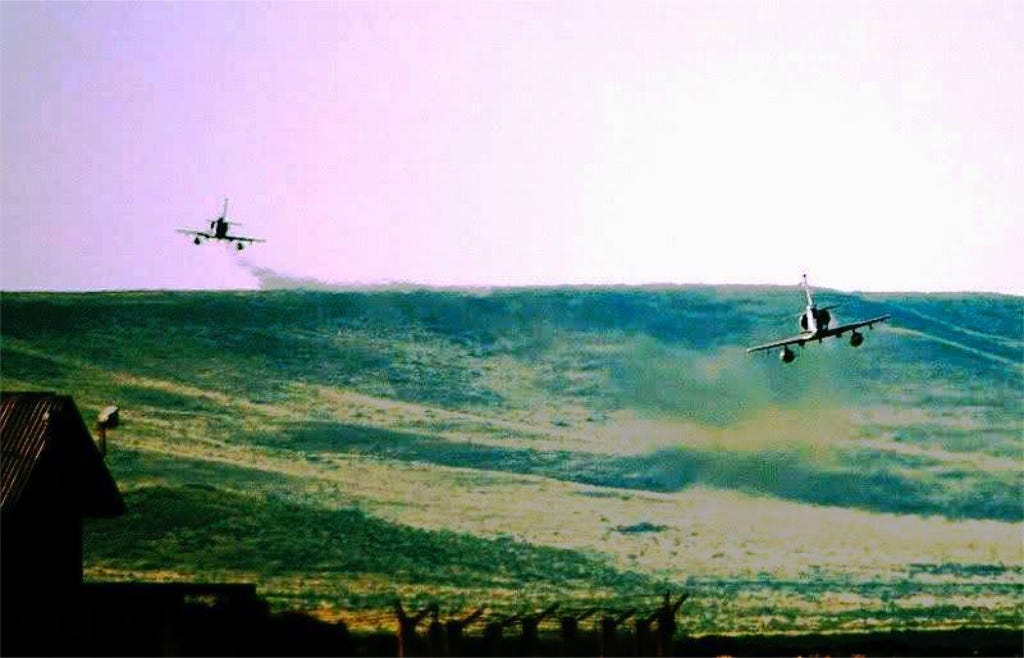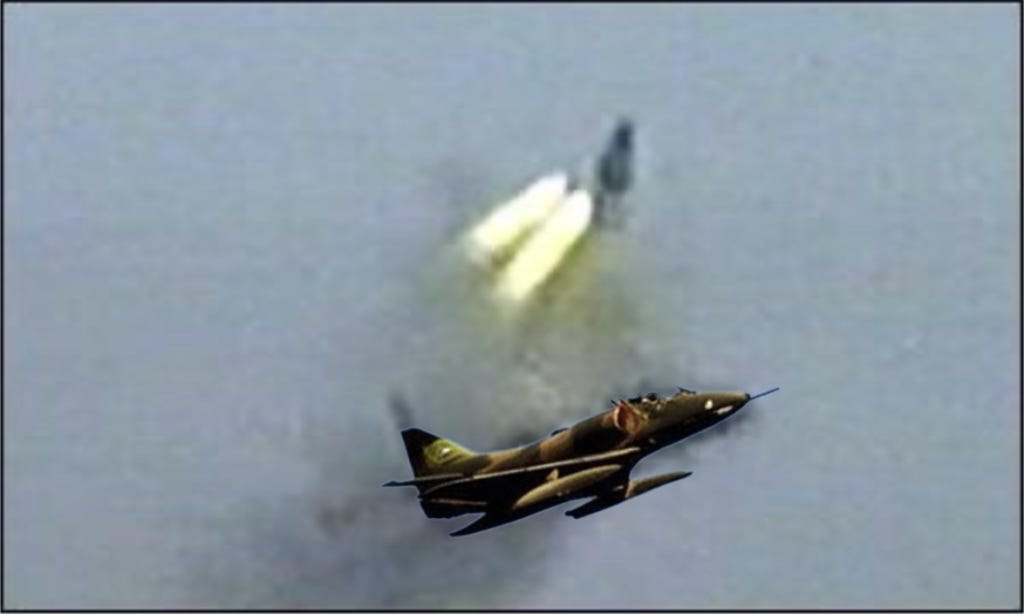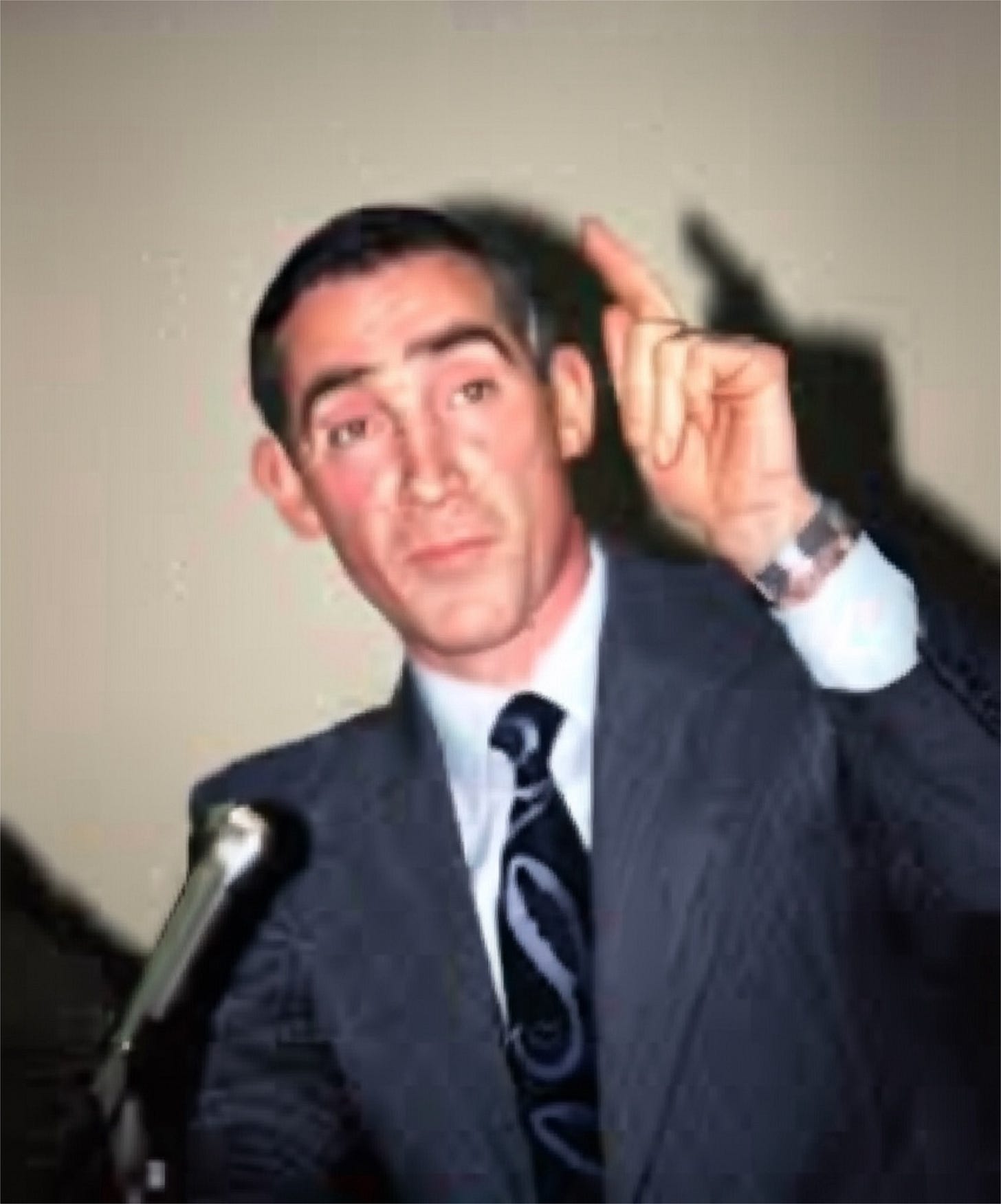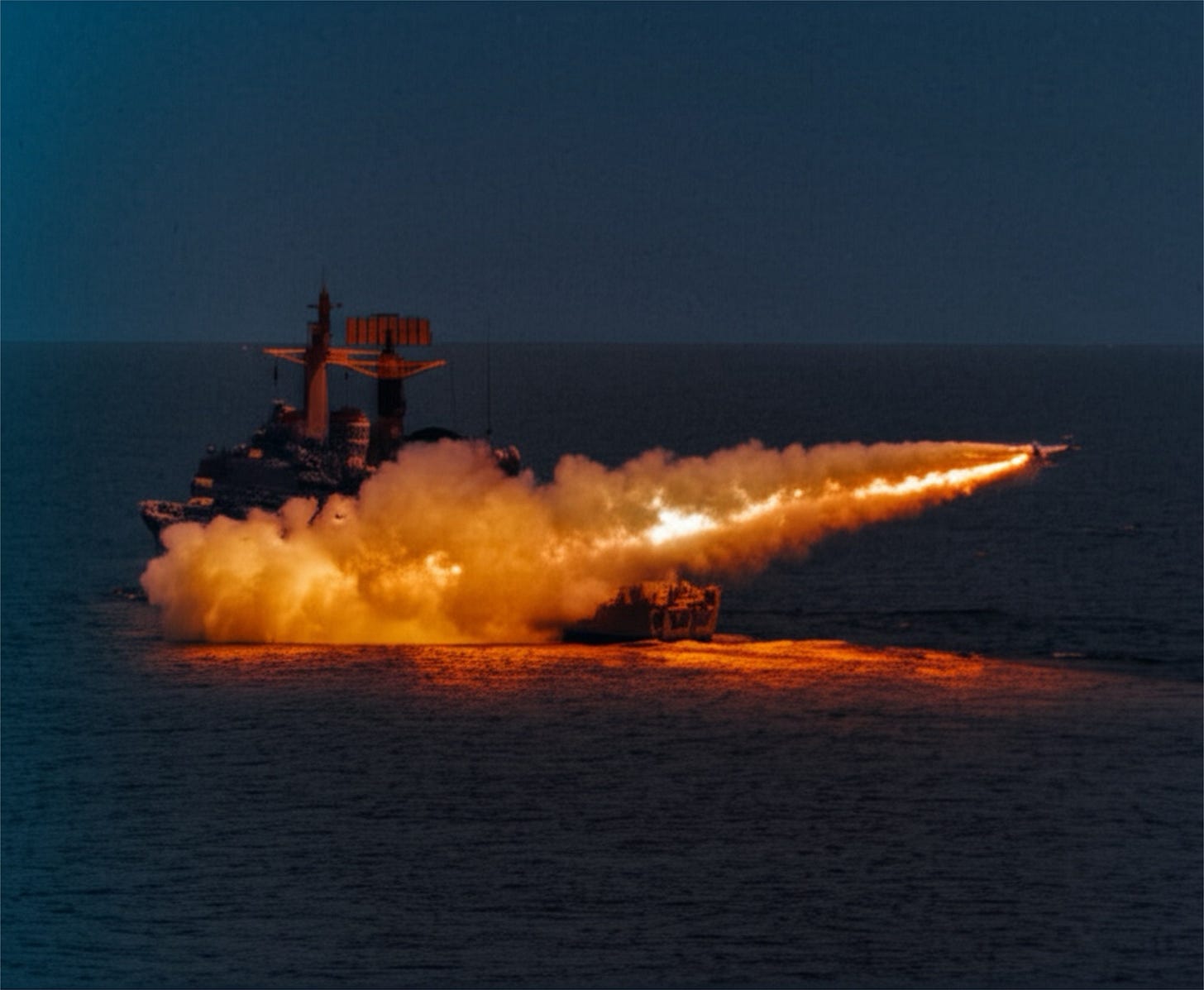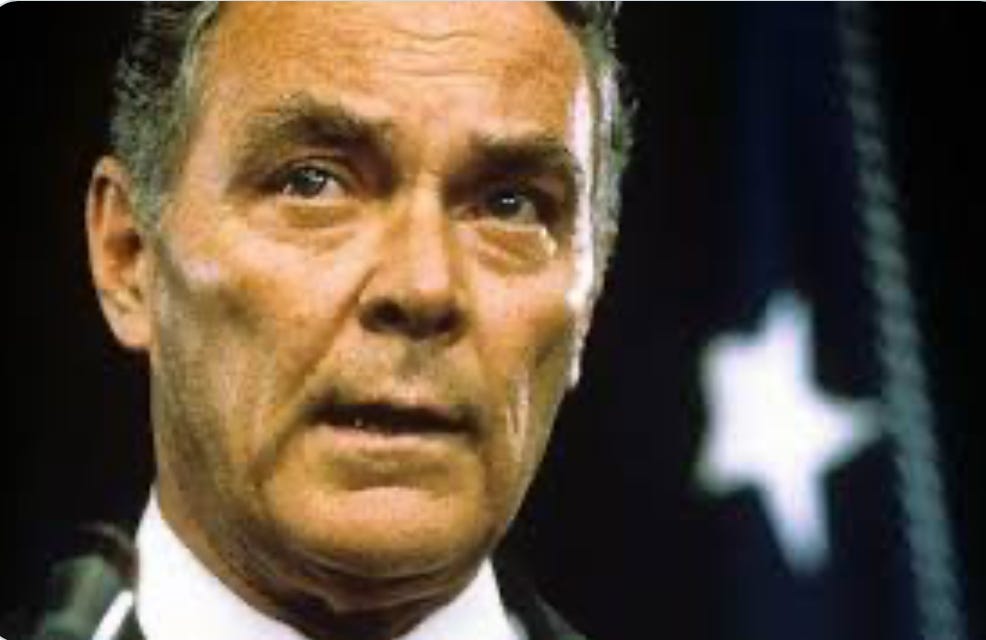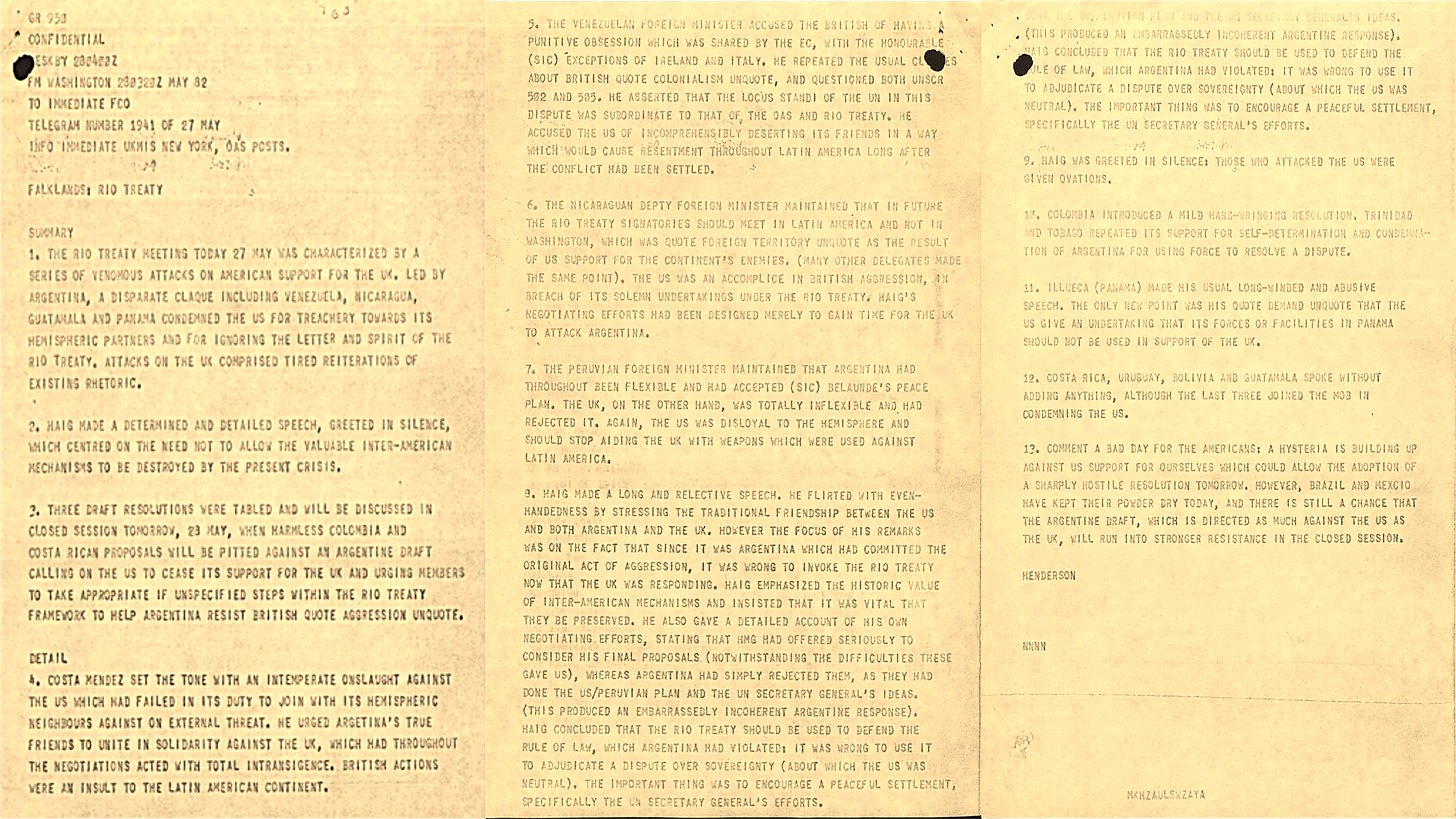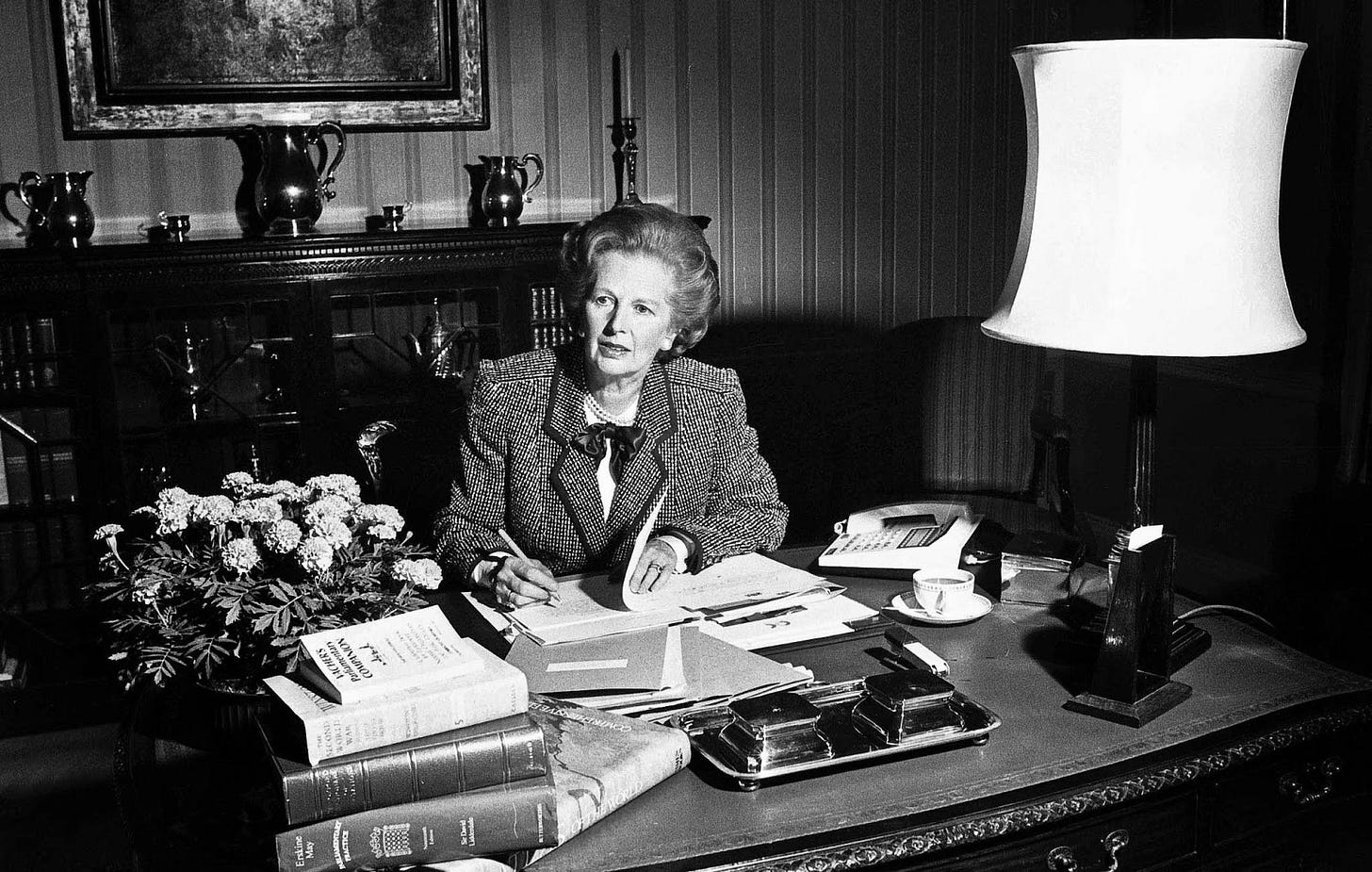On This Day: May 27, 1982 – The Falklands War Marches Inland
On May 27, 1982, the Falkland Islands, a windswept British territory in the South Atlantic, thrum with the tension of the Falklands War between the United Kingdom and Argentina. Eight weeks after Argentina’s invasion on April 2, the conflict surges forward as British forces, hardened by brutal air battles at San Carlos, push inland from their beachhead, gearing up for a critical clash that will test their resolve.
#FalklandsWar #OnThisDay
Here is the News
On Thursday, May 27th, 1982, the BBC News provides a concise recap of the day’s events as well as a brief look back at the sinking of HMS Sheffield.
For more detailed information, please continue reading.
On page one and page twenty of the New York Times the newspaper postulates that Port Stanley is next objective. Perhaps they did not hear the BBC World Service saying that 2 Para was heading to Goose Green.
BRITAIN DECLARES RETAKING STANLEY IS NEXT OBJECTIVE
British troops are poised for a drive across East Falkland Island toward the Argentine garrison at Stanley despite the ''grievous'' loss of a destroyer and a merchant ship in air raids on Tuesday, Defense Secretary John Nott declared today. Mr. Nott told a sad and solemn House of Commons that the 3,500-ton destroyer Coventry had capsized after being bombed and strafed at the northern entrance to Falkland Sound and that the 15,000-ton container ship Atlantic Conveyor, requisitioned from Cunard for use as a makeshift aircraft carrier, had been crippled by two Exocet missiles. A total of 24 men were killed on the two ships, bringing known British losses to 100, he said, and about 25 others were wounded. Bleak Day for Britain British officials freely acknowledged that Tuesday, National Day in Argentina, had been the bleakest of the war for this country. But they said they had continued to chip away at Argentine air strength, shooting down four Skyhawks and a fifth, unspecified plane.
On page 18 of the New York Times we see a number of interesting news items about the Falklands Crisis, including this one about the loss of British warships and the implications for NATO’s naval balance in the North Atlantic.
LOSS OF BRITISH SHIPS RAISES NEW QUESTIONS FOR NATO
Military Analysis
The air-sea battles around the Falkland Islands have raised questions about NATO's naval balance in the North Atlantic as well as about the design and construction of the ships used to carry out British and United States naval strategy. The loss of four surface ships to Argentine bomb and missile attacks has forced the Royal Navy to send a total of 10 more destroyers and frigates to the task force off the Falklands. As losses mount, the conviction is growing that the service, Britain's oldest and most honored, is prepared to spend more resources in search of victory. The diversion of 10 more ships completes a drastic reduction in British resources available to the North Atlantic Treaty Organization. Thirty of the 62 major surface ships - cruisers, destroyers and frigates - are now operating with the task force. One frigate is at Singapore. An undisclosed number of other ships are being refitted in home dockyards.
Again on page 18 on the New York Times is a news item expressing fears that the Royal Navy being missing from the North Atlantic may lead to additional burden for the US Navy.
U.S. NAVY WORRIED BY BRITISH ABSENCE FROM NORTH ATLANTIC
The prospect of a prolonged British naval deployment in the South Atlantic has begun to worry senior American naval officers who believe that it would lead to additional missions for the United States Navy in the North Atlantic, according to Defense Department officials. Naval officers are specifically concerned that the already strained United States Navy would be asked to take over North Atlantic antisubmarine patrols from the British fleet, which is responsible for 70 percent of those patrols now. ''It's a real cause for concern,'' said a naval officer. ''It's a void that is going to have to be filled and we're going to have to fill it.''
Also on page 18 of the New York Times it is reported that Secretary of State Al Haig cancelled a speech in Pittsburgh to attend a meeting of the Organisation of American States.
On page 20 of the New York Times the text of the latest United Nations Security Council resolution is printed.
TEXT OF THE U.N. RESOLUTION
Following is the text of the resolution approved unanimously today by the Security Council:
THE SECURITY COUNCIL, REAFFIRMING its Resolution 502 (1982) of 3 April 1982, NOTING with the deepest concern that the situation in the region of the Falkland Islands (Islas Malvinas) has seriously deteriorated,
HAVING HEARD the statement made by the Secretary General to the Security Council at its 2,360th meeting on 21 May 1982, as well as the statements in the debate of the representatives of Argentina and of the United Kingdom of Great Britain and Northern Ireland,
CONCERNED to achieve as a matter of the greatest urgency a cessation of hostilities and an end to the present conflict between the armed forces of Argentina and of the United Kingdom of Great Britain and Northern Ireland,
1. EXPRESSES appreciation to the Secretary General for the efforts which he has already made to bring about an agreement between the parties, to insure the implementation of Security Council Resolution 502 (1982), and thereby to restore peace to the region;
2. REQUESTS the Secretary General, on the basis of the present resolution, to undertake a renewed mission of good offices bearing in mind Security Council Resolution 502 (1982) and the approach outlined in his statement of 21 May 1982;
3. URGES the parties to the conflict to cooperate fully with the Secretary General in his mission with a view to ending the present hostilities in and around the Falkland Islands (Islas Malvinas);
4.REQUESTS the Secretary General to enter into contact immediately with the parties with a view to negotiating mutually acceptable terms for a cease-fire, including, if necessary, arrangements for the dispatch of United Nations observers to monitor compliance with the terms of the cease-fire;
5. REQUESTS the Secretary General to submit an interim report to the Security Council as soon as possible and in any case not later than seven days after the adoption of this resolution..
Buried on page thirty one of the New York Times for Thursday 26th May is this piece about the merits of Britain’s policy of robust diplomacy and resolute military action. The author believes that with either diplomacy or military action Britain would lose in the long run. Britain begged to differ.
ABROAD AT HOME
GOODBYE TO ALL THAT
When British forces went ashore in San Carlos Bay, many Americans must have found themselves caught up as I was in oldfashioned emotions and hopes of war. A daring landing 8,000 miles from home had succeeded. The Falklands affair might end, it seemed, by teaching a lesson to Argentina's loathsome rulers and would-be aggressors everywhere. It has not taken long for reality to overtake any illusion of easy glory, in this any more than in other wars. Britain has already paid a high military price for its counterinvasion: five ships lost, the human casualties mounting. And it is increasingly clear that military victory, if it comes, will leave the essential political problem of the Falklands unsolved - probably, indeed, further from solution than before.
In Buenos Aires, Gente magazine announces;
"We keep winning, 8 ships sunk, 16 damaged. 21 planes and 16 helicopters shot down. We are destroying the British fleet."
On the 27th of May 1982, the Los Angeles Times reported that the USA had supplied AIM9-L Sidewinders to the UK, which had been ordered in 1981. The article also speculated on the extent of Soviet support for Argentina
.

In South Georgia
On May 27th, 1982, the QE2 arrived at Grytviken, awaiting Canberra. Canberra was also scheduled to arrive to transfer 5 Infantry Brigade to the Falklands.
"QE2 continued through frigid South Atlantic conditions to rendezvous with ships at Cumberland Bay off Grytviken on South Georgia. Canberra and Norland were headed her way from the Falklands with crews keenly aware of the hazards of war.
The Welsh Guards, Scots Guards, Gurkhas, Field Ambulance and 5 Brigade Headquarters would transfer to Canberra and Norland with their equipment as quickly as possible and head to San Carlos.
Most logistics units would trail later on Stromness. These ships started arriving just before QE2 so that the cross-decking could commence without delay. It began on 27 May and continued throughout the night.
The trawlers Northella, Junella, Farnella, Cordella and Pict ferried soldiers and 250 tons of supplies, carrying whatever they could between QE2 and other vessels.
The cruise ship's captain had never attempted to unload at anchor before. All tried their best. Trawlers had difficulty, however, even staying alongside the massive superstructure of QE2 without knocking dents in her sides.
Soldiers formed chain gangs down the luxury liner's corridors to pass boxes of supplies from forward storage decks through side doors to trawlers. The few helicopters that had deployed with the Brigade ferried freight as well between the top decks of the assembled ships." 988 Privratsky 2014
Major General Jeremy Moore, the new commander of operations, would also be on board. However, Major General Moore had been severely out of contact due to faulty communications equipment.
South Georgia would continue to be used as a secure and safe anchorage for the remainder of the war. A very dejected M Company 42 Commando was ordered to remain in Grytviken to provide a garrison for South Georgia and HMS Endurance remained as guard ship.
On May 17th, 1982, RMAS Typhoon arrived at Grytviken on South Georgia. There, she attached pumps and hoses to the stricken Argentine submarine ARA Santa Fe. The plan was to pump out the water and salvage the ship. However, Typhoon discovered that the damage was too severe, and the ship would be too costly to save.
The ships around South Georgia, as shown in this map by Phil Jordan, include not just Typhoon but Endurance, British Trent, British Esk, British Tay, Blue Rover, Salvageman and RFA Pearleaf...
Meanwhile, winter now comes to South Georgia... It looks quite charming and almost picture postcard stuff except that the wind coming off those glaciers would be rather chilly, some might even say, Baltic.
In the Falklands
27th May 1982: Valerie Bennett’s (Matron of Stanley Hospital) diary for Thursday 27 May:
“Light north west wind, beautiful sunrise. Argentine troops on the move from north west. Cold wind. Air to ground fire other side of the Camber.”
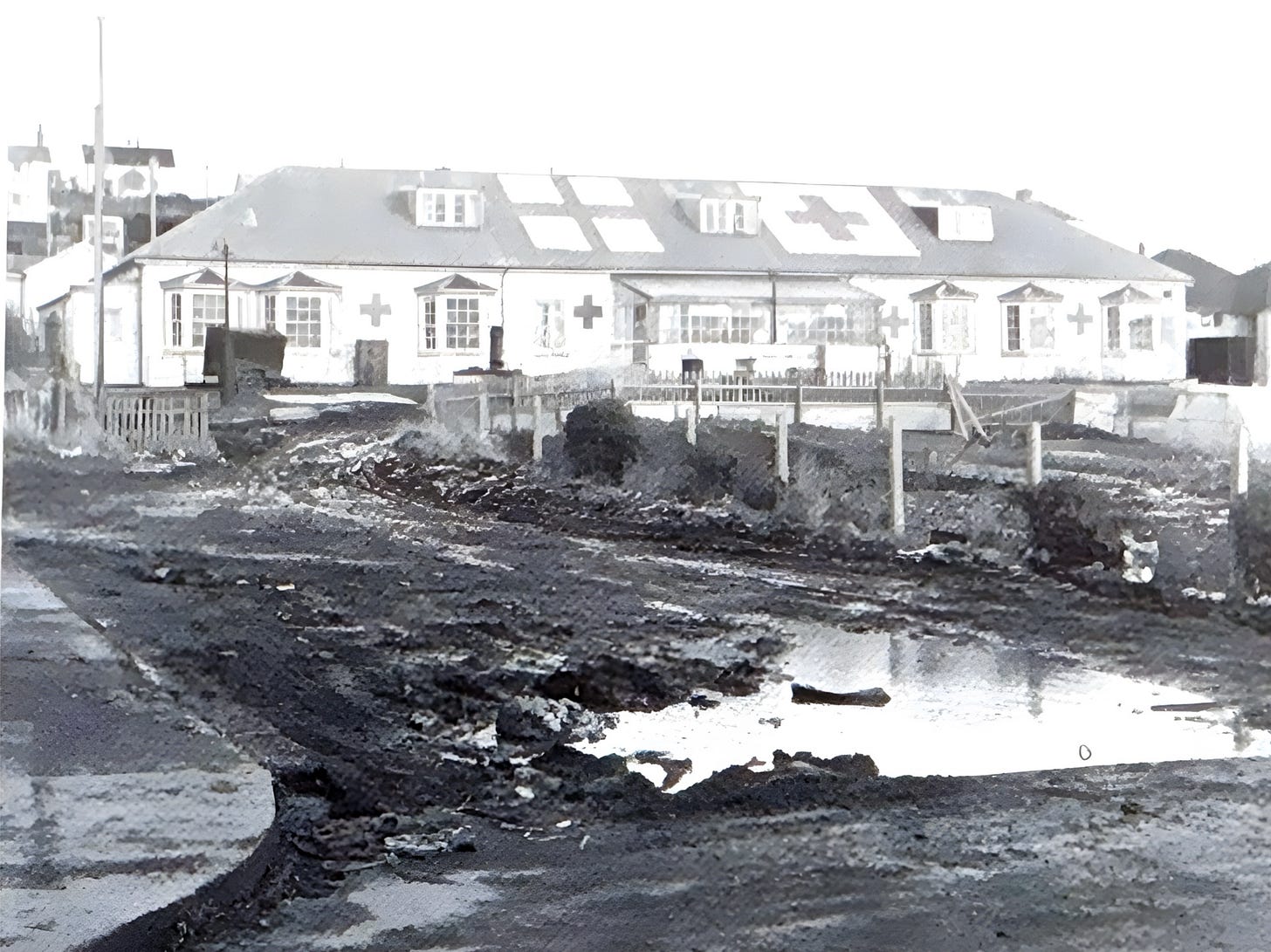
Falklands Fireman Neville Bennett had a fair bit to say about this day:
“Off to work, carrying the brand-new shiny Identity card. Millions of others in the world do this too, but not the British.
What's in store today?
Argentine soldiers are moving westwards in large numbers, both on foot and in vehicles. Now that the whereabouts of 'Maggie's Boys' is known, the troops held in town are being moved to meet them.
Malcolm asked me to go across the road and clean the stove at Tom and Hilda's. He was overnighting there with his wife, mother and a couple of other friends. It was a wise precaution. The cooker would be kept on full heat for longer hours than usual to cater for the food and hot water needs of the extra people now under that roof. The burner wasn't really dirty, just enough to warrant a clean. Hilda made me a nice hot cup of coffee and put in a little something to ward off the cold.
The dockyard buzz was all about the British troops breaking out of San Carlos. Let's hope the people locked in the hall at Goose Green keep their heads down.
By all accounts the people issuing the ID cards yesterday were not all as polite as George and the Dr who came to us.
Public disgust was expressed at the shooting of the Loggerducks, Gulls and Giant Petrels in the monument area yesterday. The odd visitor, in the past, has been forgiven for inadvertently shooting one of these protected birds. This wholesale slaughter really got up our noses.
Someone was showing a great deal of interest in the back of the Camber. Bombs and rockets being dropped from a great height. This is about the third time that they have had a go at that spot, must be a supply dump or a camp. The raid was soon over, and the AA guns were late on parade again.
The girls are getting fed up with no school and having to amuse themselves.
Not being able to wander outside as they were used to doesn't help. The library had been open but was difficult to get into as the town hall was being used as a casualty centre. The stench of wounded bodies and the great unwashed was awful. A screen of wood and hardboard panelling had been constructed to let people have access to the library without seeing into the rest of the building. With so many armed men prowling round down there it was uncomfortable to go in, even to exert our rights of freedom.
Rachel remembers . . .
Yes, it stank. It was intimidating being watched by armed men as we went about our daily business - even doing something as innocent as visiting the library.”
In supporting fires for a picture of islander life it is worth looking at what John Smith records. Both Neville and Valerie Bennett were what we would call today essential workers - Chief Fireman and Matron of the Hospital respectively - while the Smiths as owners of a guesthouse with no paying guests have a completely different experience.
Thursday 27 May DAY FIFTY-SIX
Dull, cloudy and damp. Very cold. Wind west, Force 4, decreasing during the afternoon.
Think the attack on Goose Green may be underway. Intense activity in Stanley. Helicopters flying out the Argentine Special Forces from the racecourse with vast quantities of ammunition. Big panic on.
One solider was killed when he rolled a drum of petrol over a mine. Another soldier injured himself while cleaning his rifle. Lots of movement towards Mount Kent and in the Estancia direction where presumably the Argentine front line must be. Very long and loud explosion about 4.45 this evening, rather like heavy cannon fire, over in the Murrel River area. Tyssen says he saw flashes in the sky. I've never heard an explosion like it before. An Argentine aircraft, which sounded like a C-130 Hercules, got in and away again during the night.
BBC news again is a mixture of encouragement and tragedy. Canberra bombers have attacked San Carlos. Helicopter pads have been set up within the bridgehead. Scorpion tanks and more artillery are ashore.
The Pope is due to arrive in England tomorrow, then on to Argentina. We pray that he will be able to persuade Galtieri to stop his madness. Later news during the day said that the Royal Marines are moving towards Stanley and the Paras towards Darwin; n o mention of where the other 3,000 British troops are. The survivors o f HMS Sheffield arrived in UK today.
Managed to have a bath this morning, which was somewhat curtailed by a Harrier bombing raid. Lots of anti-aircraft guns firing from nearby, which sounded exceptionally loud in the bathroom, so got outside rapidly and damply to watch events. As usual the firing was enthusiastic but thankfully inaccurate.
During all the commotion a young soldier came up to the gate and asked if we could give him something to eat. He seemed to have lost all interest in the current proceedings. We gave him some bread; what else can one do in such circumstances? One is compelled to make decisions between humanity and politics. I hope he had time to eat it before being caught and dealt with.
Despite the seriousness of our present position, there is a wonderful air of what I suppose might be called a community spirit among everyone. We are all cheerful and seldom a day passes without some small episode which causes great amusement. This goes not only for us as a household, but for everyone in town; though having said that, we have noticed recently, especially when shopping, that some people have suddenly got a lot older in appearance, but they still put on a brave front. No one knows what the next few days o r weeks will bring, but we try to keep our thoughts and fears to ourselves.”
Military Events
This 20 minute clip from "The Commando Tale" covers the timeframe from just before the San Carlos landings until just after 45 Commando Royal Marines completed their 90 mile route march (or yomp in RM parlance).
On the 27th of May, 1982, at 01:30, Special Boat Squadron and Naval Gunfire Support observers were inserted near Port Howard.
HMS Plymouth then fired 300 salvoes on Argentine positions, hitting encampments, fuel and ammo stores, AA guns, the Argentine HQ, and a gun battery. The shore party was recovered before dawn.
Harriers streak in over Stanley and bomb Argentine positions. Heavy but inaccurate AA fire. Nightly bombardments & daylight raids are all part of Operation "Tornado" which convinces Argentine commanders that the real landing will be at Stanley.
On the 27th of May, 1982, at 08:00, as mentioned in Valerie Bennett’s diary above, large numbers of Argentine soldiers were seen moving to the mountains, carrying large stacks of munitions. Tragically, one man accidentally shot himself, and another set off a mine using a fuel drum.
The Falklands War - From the War Diaries of Admiral Woodward
WITH LAND FORCES
On 23rd May, two days after landing, 2 Para's c/o Lt Col H Jones emerged from a planning meeting aboard INTREPID with a timetable to attack Goose Green on 25th May.
On the 24th May, the operation was cancelled, because it 'was not favoured' in London. However, its military necessity could not be denied and at noon on 26th, the attack was re-instated. Typical hurry up and wait.
The BBC reported, on May 27th, speculation in the British press that Goose Green had fallen, before the attack had even taken place. Lt Col Jones was furious when he heard this news on the BBC World Service radio.
Eyebrows were raised at this report by islanders:
"The radio announcer from the BBC said that the troops were preparing to move off from the northwest to attack an important strategic target. The only place they could go was Goose Green. Nice of them to warn the enemy - unless the attack had already begun " Neville’s diary from Bennett 2021
The men of 3rd Commando Brigade, and especially of 2 Para, were dismayed by the BBC World Service speculation about their upcoming operation.
"At about midday someone in the Battalion tuned into the BBC's World Service and heard the announcement that 2 Para were advancing on Darwin, while 45 Commando and 3 Para were advancing on Douglas Settlement and Teal Inlet Settlement respectively. Jones was furious and ordered the Battalion to disperse and dig in to face the attack that must surely follow this gross breach of security. However, no attack came..."
Thompson 1992
As for the commander of 2 Para, the mercurial Lieutenant Colonel H. Jones was incandescent with rage over what he saw as treason.
"... it ought to be recorded, perhaps, that the commanding officer of 2 Para, Lieutenant Colonel H. Jones, also wanted to sue John Nott, the prime Minister, the Defence Ministry, the BBC and many others, charging them with manslaughter. Colonel Jones was killed leading his men towards Goose Green shortly after telling reporters that he wished to undertake legal proceedings himself, after the BBC broadcast the fact that an attack on Goose Green was imminent - that 2 Para was within five miles of Darwin."
Woodward 1992
The BBC World Service radio broadcast was picked up by Argentina's command at Stanley and by the officers at Goose Green, but it appears that the report was dismissed as disinformation.
The Argentine commander at Goose Green Piaggi was listening to the same broadcast and shook his head in disbelief. Did the British really think he was that stupid!? Hah! They were obviously going to attack somewhere else and were using the announcement as a diversion. So he told his men to relax.
'I did not take it too seriously; I thought it was more a psychological action... I made no changes because of that broadcast.'..."
Middlebrook 2003
Even so during the night of 27th / 28th May more troops were flown in by helicopter from Port Stanley. Goose Green was held by the 12th Regiment, (an elite Regiment), plus hundreds of Marine and HQ elements.
C Coy scouted the area and did a superb job of mapping all the strongpoints, allowing H Jones to formulate his battle plan, however they could not see the long line of trenches along Darwin Hill as contours of the land hid them from view.
By dawn on the 27th 2 Para were camped at Camilla Creek House, their jumping off point for the attack. They lay up in dead ground, less than five miles from Darwin, out of sight of the enemy and without detection.
Having moved from Sussex Mountain towards Goose Green, and reaching Camilla Creek House, an abandoned farm, by daylight, 2 Para capture an Argentine patrol and H Jones (Pic 2) stops for a cup of tea.
It is determined that they will have to attack across the narrow isthmus by daylight in order to ensure no civilian casualties as collateral damage. They had 14 hours to Tab 14km over rough, boggy ground, in the dark, to attack by first light. It would have to be enough...
Meanwhile, B Company, 40 Commando was the first to detect enemy infiltration in the beachhead area. A patrol in the Verde Mountains overlooking San Carlos Water uncovered a very dirty Argentine Lieutenant Commander Dante Camilette of the Argentine Marines.
He had been found observing British warship movements from a concealed position above San Carlos Water. He had a well concealed hide and had been there for several days, radioing back reports of the buildup of troops in San Carlos
45 Commando and 3 Para set out on their epic hike for Teal Inlet on the 27th May - in the process introducing us to two new words.
YOMP
Yomp is Royal Marines slang describing a long-distance loaded march carrying full kit.
It was popularised by journalistic coverage in 1982 during the Falklands War. Some sources attest to it meaning Your Own Marching Pace.
TAB
Tactical Advance to Battle is the Parachute Regiment equivalent to the Marines Yomp.
Two RAF Harrier GR3s distracted the Argentine garrison of Darwin / Goose Green at 1.00pm.
Dropping cluster bombs on troop positions, they ignored the oft-relearned lesson that re-attacks are invariably hazardous and came back for strafing runs.
On his fourth pass Squadron Leader G. R. Iveson RAF was hit by 20mm Oerlikon AA fire and had to eject west of Goose Green. Sheltering in a deserted house, he evades until after the fall of Goose Green when he was rescued by a naval helicopter.
In the house, and having eaten, he takes off with blankets and a map. Once far enough away he activates his personal locator beacon. Here's his story. The "Escaper of the Year" award winner (yes, really) Bob Iveson RAF:
The other GR3 was also hit but, although the Argentine Air Force gunners believed that it had probably been destroyed, it managed to return undamaged to the Hermes. Another attack on Goose Green that day suffered no damage.
The San Carlos area was spared air attacks until after noon. This was fortunate, as at 10:40 am, cutting operations on the Argonaut led to a significant fire. The fire wasn’t brought under control until 12:10 pm and was extinguished ten minutes later.
The frigate’s firefighters were assisted by teams and equipment from two LPDs. For a time, the Argonaut’s Operations Room had to be evacuated, leaving the anchorage without its only long-range air-warning radar. Meanwhile the Fleet Clearance Diving Teams completed cutting the ship open and began the delicate task of moving the bomb through the ship.
This process took many agonising hours and it was not until May 28th that it was finally lowered over the side and into the sea. It was a textbook and well executed EOD operation but had tied up Argonaut for seven days.
Lieutenant Commander Dutton had previously been awarded a Queens Gallantry Medal for EOD work in UK, he was now to be awarded the Distinguished Service Order for his sustained and resolute leadership throughout the operation
The expected air raids began in the gloom of the late afternoon, a pair of A-4Bs attacking from the south-east valley with little warning at 3.35pm. For the first time they deliberately attacked targets on shore (possibly as the result of the recently unearthed observer’s report that there were no loaded transports present), selecting the Brigade Maintenance Area and the Ajax Bay refrigeration plant for their parachute-retarded bombs.
Fortunately, those which hit the building failed to go off, thus sparing the Field Hospital. Unfortunately those which landed in the open supply dump did explode, killing five men and injuring twenty others of the Commando Logistics Regiment and starting major fires among the stacks of ordnance.
Primer Teniente Velasco, already credited with the Argonaut and the Coventry, led the strike. However, this was his last success of the campaign. His Skyhawk was hit and set on fire by the Fearless’s 40mm guns, forcing him to eject halfway across West Falkland.
He was only the second Air Force A-4 pilot to do so.Velasco lands between Fox Bay and Port Howard, and walks for two days and nights until he finds an uninhabited house with food. The following day, two Falkland Islanders find him and drive him to Port Howard, handing him over to his own side.
Teniente Osses, Velasco’s No. 2, was also hit but managed to return to Rio Gallegos.
A second wave of Skyhawks attacked fifteen minutes later. Again, two Skyhawks came down the valley, and these dropped their bombs on the opposite side of the water on the San Carlos Settlement positions. Two members of 40 Commando were killed, and six others wounded, but little material damage was inflicted.
Once more, the aircraft were accurately engaged by the old Bofors guns, as well as by Rapiers and small arms fire, and one at least was seen to take hits.
Yes, yes! Look, bits are falling off! I've got him!" yells one British soldier as he puts six rounds into Carballo's Skyhawk as it flies past...
Captain Pablo Carballo weaves away as rounds hit his aircraft. One of them punches a 25cm hole through the cockpit, destroys his controls and severs a bundle of cables the thickness of a fist, damaging his navigation and comms systems, but he makes it out alive...
As had happened a few minutes previously, the subsequent R/T conversation between the pilot of the badly damaged aircraft and his companion was intercepted by the Fearless. The tale of mounting problems culminated in an ejection over the sea twenty minutes after pulling away from the target area, an event which was reported by the surviving Skyhawk. The name and fate of the downed pilot are not known, for this loss has not been acknowledged by the Argentine authorities.
The casualties from Ajax Bay & San Carlos Settlement were evacuated to the Intrepid by 4.05pm. The Red and Green Life Machine', with one bomb wedged unexploded inside the building and another in the roof structure, was evacuated of all patients fit to be moved.
RAF bomb disposal personnel needed to examine the bombs in daylight. Flight Lieutenant A. Swan slept beside the bomb inside the hospital to reassure the patients and medical staff that remained. For this he received the Queens Gallantry Medal.
‘It was a bomb in the roof, a bomb in the fridge; the bomb in the fridge had a fuze that I think, they made it up, just welded this on, welded that on, and we had no kit that we could [use] to get at it, and I spoke to the colonel and he said ‘well, we’re going to Stanley shortly, so is it going to go off? I said “well, I would say no”, but, I said, just to put my money where my mouth is, I’ll sleep in that room and a) it was the only empty room, because it had an unexploded bomb in it and b) I was convinced it wasn’t going to go off. And the one in the roof, we couldn’t get at really, we’d have [had] to drop it to get at it, so again I was convinced it wasn’t going to go off so we left it and the army follow-up teams took it out.’
Flight Lieutenant A. Swan
As darkness falls, HMS Avenger is to the south of Stanley when a missile from land screams across her helicopter deck, just missing her... What was it??
Initial reports speculate a land based Exocet, or an Israeli Gabriel or similar.
It was later discovered that the Argentine Navy had improvised a trailer-mounted MM-38 Exocet coast defence battery, flying in the launch canisters landed from the Type A.69 corvettes. Targeting was provided by the ubiquitous TPS-43 radar and the missiles could be fired from anywhere along the hard road between Port Stanley and the airfield. The Avenger was to the south of Harriet Cove, between firing runs, when a large projectile hurtled noisily across her flight deck at a height of about five feet. The frigate was well out of range of the Argentine field guns and surface-to-air missiles and Captain H. M. White and his ship’s company were convinced that they had been the target of the first shore-based Exocet firing.
Brown 2021
The Argentine Army had more to worry about during the night of 27/28 May than the arrival of two supply ships. The biggest bombardment programme so far had been organised to divert the occupiers’ attention from the 2 Para attack on Darwin-Goose Green and to support the attack itself. Five ships firing over 700 rounds of 4.5in (17½ tons of shells) between them. The Glamorgan, Avenger and Alacrity detached from the Battle Group at sunset and took up stations to the south of the peninsula on which Port Stanley stands.
Brown 2021
Captain Barrow took the Glamorgan back to a familiar target, the airfield. Only fifty rounds of 4.5in were fired to disturb the defenders and deter any air transport movements, but the destroyer introduced a new bombardment weapon. The Seaslug missile in the surface-to-surface mode weighed as much as a 15in shell and arrived almost as fast; effective against targets with ‘vertical extent’, such as the airfield buildings, it would appear that at least one did score a direct hit.
Brown 2021
HMS Glamorgan and her sister ships were equipped with the massive Sea Slug Missile which was originally designed to take our high flying Russian bombers and thus was obsolete in 1982 against modern fast jets. However it had a secondary design mode called "Constant angle of site with Terminal dive" mode. It turned a useless weapon system into a useful surface to surface missile, with a 200lb warhead strapped to 2.5 tons of supersonic missile with a 30 mile range. The effect of the missile being fired at night would have been very dramatic and I understand that Glamorgan received messages to check if she had been hit.
The giant missile blows up an Argentine radar and control cabin, killing Captain Luis Dario Jose Castagnari (pictured) and causing "injuries of varying severity" to several others, possibly also damaging a Pucara at the airport.
Diplomatic & Political Events
At 7.30am on the 27th May 1982, the Foreign and Commonwealth Office presented their Situation Report to the British War Cabinet.
Dominated by diplomatic issues and questions for quidance:
Security Council adoption of resolution 505 which was based on an Irish draft which was highly modified.
Sir Anthony Parsons assessment of events and thoughts on the next steps.
Meeing of the Organisation of American States to consider the Rio Treaty.
Joint request from the Presidents of Colombia, Brazil and Peru for a five day ceasefire.
Request for guidance for Sir Anthony Parsons on how to handle the next stage in the UN as there is a high likelihood of an early return to the Security Council and it is feared that US support is unreliable. Imagine that!
In Chile, following Lieut. Hutchings' press conference, Wing Commander Edwards speaks to General Vicente Rodríguez, the head of Chilean Air Force (FACh) intelligence.
"General Rodriguez said it was a pity because, had he known about it in advance, the crew would not have needed to destroy their helicopter. He said we could have hushed the whole thing up and refuelled the helicopter so that the crew could have flown it back to the Task Force at night. . I explained that the (SAS) patrol was now in hiding on the Chilean side of the border and we would like to move them up to the Santiago area in complete secrecy and hide them where they could recover from their mission. ... The SAS patrol was soon extracted from its position in southern Chile to be flown back at night to a Chilean Air Force base near Santiago. .. General Rodriguez kindly chartered a civilian registered 707 aircraft on my behalf. ... The patrol was thus spirited out of Chile (June 8, 1982) with no leaks to the media." Edwards 2014
In London, the Prime Minister Margaret Thatcher addresses the House of Commons.
"Yesterday the United Nations Security Council adopted unanimously a resolution on the Falkland Islands. It reaffirms resolution 502 and requests the Secretary-General to undertake a renewed mission of good offices, to enter into contact with Britain and Argentina with a view to negotiating mutually acceptable conditions for a ceasefire and to report again to the Security Council within seven days.
We shall, of course, co-operate fully with the Secretary-General in that. In voting for the resolution our representative at the United Nations made it clear that, in view of Argentina's continued refusal to implement resolution 502, the only acceptable condition for a ceasefire is that it should be unequivocally linked with a firm and unconditional Argentine commitment immediately to commence withdrawal of its forces from the islands. …
In the published proposals that we debated last Thursday there was a linked withdrawal of British forces and Argentine forces. Those proposals have been withdrawn and as our ambassador to the United Nations made clear when he voted for the resolution, there can now be no question of a British withdrawal. He said: We are talking about Argentine withdrawal. We cannot now accept that Argentine withdrawal be linked in any way to parallel British withdrawal.
The talks with the Secretary-General will be about unequivocal withdrawal of Argentine forces in accordance with resolution 502 as a condition for a ceasefire. After that, we shall be in repossession of the islands. We then wish to restore British administration. Administration has to continue under existing British law and under existing democratic institutions. There will be a great deal of reconstruction work to do, and also talk about development of further resources.
It will take some time for the islanders to crystallise their views, but then we must have discussions with them about the longer-term interests. It will be most unwise for us to give away any of that in advance."
HC Deb 27 May 1982 vol.24 cc1049-52
Francis Pym responds to Secretary-General de Cuéllar's urgent question.
"You have asked about the British Government's definition of acceptable terms for a ceasefire. In our view a ceasefire that was not linked inseparably to Argentine withdrawal would give Argentina another opportunity for procrastination through intransigence. The British answer to your question is therefore that a ceasefire is highly desirable and would be acceptable if it was inseparably linked to the commencement of Argentine withdrawal
and the completion of that withdrawal within a fixed period. ... A change of position by Argentina involving willingness to implement Resolution 502 could transform the situation. It would be most encouraging if in your resumed efforts for peace under the mandate of Security Council Resolution 505 you could obtain from Argentine convincing evidence of such a change. Argentina's immediate response to your question yesterday may not do this, in which case I hope you would go back to them on the point. "
PREM19/631 Telegram No.475 of 27 May 1982
In Dublin, Britain's Ambassador informs Taoiseach Charles Haughey that, as Ireland tabled a draft-resolution unacceptable to the UK, relations had taken a, "considerable turn for the worse."
In Washington DC, addressing the Twentieth Meeting of Consultation of Ministers of Foreign Affairs of the Rio Treaty (OAS), Secretary Haig makes a "detailed and determined" speech. He focuses on the fact that, since it was Argentina which had committed the original act of aggression, it would be wrong to invoke the Rio Treaty.
"This festering dispute has suddenly become a violent conflict that poses dangers to the very institutions and principles which bring us here and that have made this hemisphere, in many ways, the envy of the world.
The war puts the inter - American system under stress.
Some say that this is an "anti-colonial war" because the islands were formally administered as a British colony. Some say that since this is a war that pits an American republic against an outside power, the Rio treaty requires that all its members come to the assistance of the American republic.
Others say that it is impossible to speak of colonialism when a people is not subjugated to another and, as we all know, there was no such subjugation on the island. Others say there is no way in which the inter-American system - which protects regional order based on law and the peaceful settlement of disputes - can be interpreted as sanctioning the first use of armed force to settle a dispute.
With full respect for the views of others, the U.S. position is clear: Since the first use of force did not come from outside the hemisphere, this is not a case of extracontinental aggression against which we are all committed to rally. ..
We face a conflict that involves us all, but to which the Rio treaty does not well apply. It is a dispute over competing claims of sovereignty, each with profound historical and emotional sources. We know how deep is the Argentine commitment to recover islands Argentines believe were taken from them by illegal force. This is not some sudden passion but a longstanding national concern that reaches back 150 years and is heightened by the sense of frustration over what Argentina feels were nearly 20 years of fruitless negotiation.
We know, too, how deeply Britain, in peaceful possession of the disputed territory for 150 years, has been devoted to the proposition that the rights and views of the inhabitants should be considered in any future disposition of the islands. No one can say that Britain's attitude is simply a colonial reflex to retain possession of distant islands.
In the last 20 years no less than nine of the members of the Organization of American States received their independence in peace and goodwill from Great Britain.
For its part, the United States has not taken - and will not take — any position on the substance of the dispute. We are completely neutral on the question of who has sovereignty.
Indeed, 35 years ago, at the 1947 signing of the Final Act of the Rio Conference which created the Rio Treaty, the United States Delegation made this clear at the same time it set forth our position that the Treaty is without effect upon outstanding territorial disputes between American and European states.
... We must search for ways in which we can all join in helping to bring about peace, not ask the Rio Treaty mechanism to adjudicate a conflict for which it was never conceived."
Department of State Bulletin July 1982 vol.82 no.2064 pp.87-88. Also OAS Doc. OEA/Ser.F/II. 20 Doc. 67/82 pp.28-35
Haig's speech is greeted in silence. Speeches from delegates that attack the USA, however, receive ovations.
"Costa Méndez set the tone with an intemperate onslaught against the US which had failed in its duty to join with its hemispheric neighbours against an external threat. He urged Argentina's true friends to unite in solidarity against the UK, which throughout the negotiations had acted with total intransigence. British actions were an insult to the Latin American continent.
The Venezuelan Foreign Minister accused the British of having a punitive obsession which was shared by the EC, ... He asserted that the locus standi of the UN in this dispute was subordinate to that of the OAS and the Rio Treaty. ...
The Nicaraguan Deputy Foreign Minister maintained that in future the Rio Treaty signatories should meet in Latin America and not in Washington, which was "foreign territory."... The US was an accomplice in British aggression...
The Peruvian Foreign Minister maintained that Argentina had throughout been flexible...
Colombia introduced a mild hand-wringing Resolution. Trinidad and Tobago repeated its support for self-determination and condemned Argentina for using force to resolve a dispute.
Illueca (Panama) made his usual long-winded and abusive speech.
Costa Rica, Uruguay, Bolivia and Guatemala spoke without adding anything, although the last three joined the mob in condemning the US. "
PREM19/632 Telegram No.1941 of 27 May 1982
"The U.S. position was that because the unlawful resort to force did not come from outside the hemisphere, this was not a case of extra-continental aggression against which we were — and are — all committed to rally."
The South Atlantic Crisis: Background, Consequences, Documentation US Dept of State, Bureau of Public Affairs August 5, 1982 (evidence of Assistant Secretary Enders)
Ambassador Henderson reports that Washington is still concerned that their relations with Latin America are suffering due to the USA's support of the UK.
"As they see it, we are now insisting on surrender of the Argentinian garrison and a return to British rule without any definite commitment to an attempt to achieve a long-term solution. In effect, we are basing ourselves on a return to the status quo ante."
Henderson goes on to suggest that the Islanders' interests could be safeguarded by; "... some international group comprising say, two regional powers, plus the US and the UK, with the presence perhaps of the US and Brazilian forces and that, without prejudice to the future, in a given number of years this group will, in keeping with the wishes and interests of the Islanders, make proposals about the status of the Falkland Islands."
PREM19/631 Telegram No. 1921 of 27 May 1982
In London, after reading Henderson's suggestions, Thatcher scrawls the word "NO" across the last paragraph.
The ‘Iron Lady’ is not amused by the suggestion of compromise at this point, and she would have been acting contrary to public opinion who wanted the military to be allowed to finish the job of throwing the invaders out.
In Buckinghamshire, the Conservative Party candidate Tim Smith won the Beaconsfield constituency by-election, securing 61.8% of the vote. Labour Party candidate Tony Blair came in third with only 10.4% of the vote.
"A new poll of 400 Britishers shows that if a national election were held now, the Conservatives would defeat Labor by a two-to-one margin. Eighty-four percent were satisfied with Prime Minister Thatcher's handling of the crisis, a substantial increase."
CIA Intelligence report dated May 29, 1982. See - https://nsarchive.gwu.edu/document/21355-19820529-uk-
argentina-british-military-gains
On the 27th of May 1982, the Red Cross received information from Buenos Aires confirming that Flight Lieutenant Glover had been captured and was being held in Port Stanley. The Argentinian authorities had expressed their intention to transfer him to the mainland.
On the 27th of May, 1982, a letter was forwarded to London from the British Embasy in Paris. It had originally been sent to the British Ambassador in Paris, from Monsieur Michel Debré.
Michel Jean-Pierre Debré was the first Prime Minister of the French Fifth Republic. He is considered the "father" of the current Constitution of France. He served under President Charles de Gaulle from 1959 to 1962.
The letter expressed strong support for the British cause of retaining the Falklands.
Overview of the Day
On May 27, 1982, the Falklands War was in a pivotal phase, with significant military, political, and diplomatic developments driving the conflict toward its climax. Below is an overview of the key events on this day, grounded in historical context and available information.
Military Events
British Advance Toward Goose Green: The 2nd Battalion, The Parachute Regiment (2 Para), under Lieutenant Colonel Herbert "H" Jones, continued its movement from Sussex Mountain toward Darwin and Goose Green, positioning for the imminent Battle of Goose Green (May 28–29). This operation aimed to neutralize a key Argentine garrison, secure a strategic foothold, and boost British momentum south of the San Carlos beachhead.
Troop and Logistical Movements: At South Georgia, the requisitioned liner RMS Queen Elizabeth II (QE2) met SS Canberra to transfer 5 Infantry Brigade, including Major General Jeremy Moore, the new land forces commander, and additional troops to reinforce the Falklands campaign. This transfer, completed around this time, was critical for bolstering British ground forces ahead of the push toward Port Stanley. Meanwhile, 3 Para and 45 Commando pressed forward with their arduous "yomp" across East Falkland, advancing toward key objectives like Mount Kent, where SAS patrols were already active.
Naval and Air Engagements: British warships, including HMS Invincible and HMS Hermes, maintained bombardments on Argentine positions around Stanley and other targets, while Sea Harriers conducted patrols to counter Argentine air raids. The task force, operating within the 200-mile Total Exclusion Zone, remained vulnerable to Argentine Exocet missiles and Skyhawk attacks, with recent losses like HMS Coventry (sunk May 25) heightening alertness.
Argentine Defensive Preparations: Argentine forces, under General Mario Menéndez, fortified positions around Port Stanley, anticipating a British assault. At Goose Green, approximately 1,000 Argentine troops, including elements of the 12th Infantry Regiment, held 115 Falkland Islander civilians captive, complicating British plans for the upcoming battle.
Political Events
UK Domestic Dynamics: In Britain, Prime Minister Margaret Thatcher faced intense scrutiny as the war’s toll grew, with ships like HMS Coventry and HMS Ardent recently lost. Public support remained strong, but parliamentary debates reflected concerns over casualties and the campaign’s cost. The government’s commitment to recapturing the Falklands was unwavering, with Thatcher’s leadership bolstered by the San Carlos landings’ success and the prospect of further victories.
Argentine Junta’s Struggles: In Argentina, the military junta led by General Leopoldo Galtieri clung to nationalist rhetoric, framing the war as a defense of “Las Malvinas.” However, the sinking of the ARA General Belgrano and mounting air losses were undermining military morale, and economic woes fueled domestic unrest. The junta’s refusal to compromise diplomatically entrenched the conflict, though public demonstrations in Buenos Aires still showed support for the war effort.
Diplomatic Events
Stalled Peace Efforts: Diplomatic initiatives to end the conflict were effectively dead by May 27. The United Nations, through Secretary-General Javier Pérez de Cuéllar, had proposed peace plans, but Argentina’s insistence on sovereignty guarantees and Britain’s demand for Argentine withdrawal (per UNSCR 502) led to an impasse. The U.S., now firmly backing the UK with supplies like Sidewinder missiles, had abandoned earlier mediation attempts led by Secretary of State Alexander Haig.
International Alignments: The UK continued to draw support from Commonwealth nations, including Australia, Canada, and New Zealand, with New Zealand’s vocal backing reinforcing Britain’s position. In contrast, Latin American countries, citing the Rio Treaty, criticized U.S. support for the UK, viewing it as a breach of regional solidarity. This diplomatic isolation pushed Argentina to rely more on Soviet-bloc supplies, though direct Soviet involvement remained limited.
Context and Atmosphere
May 27, 1982, was a day of heightened anticipation and preparation. The British task force, reinforced by the troop transfer at South Georgia, was poised for significant land operations, with 2 Para’s advance toward Goose Green signaling an imminent clash. The loss of HMS Coventry days earlier underscored the war’s brutality, while Argentine forces, though demoralized, remained dug in. For Falkland Islanders, particularly the 115 captives at Goose Green, the situation was dire, with occupation marked by fear and uncertainty. Politically, both Thatcher and the Argentine junta faced domestic pressures, but neither showed willingness to back down. Diplomatically, the world watched a conflict with no viable off-ramp, as the South Atlantic braced for the decisive battles ahead.
References:
https://x.com/RDPHistory
“The First Casualty” by Ricky D Phillips
“The Falklands Invasion” by Ricky D Phillips
“The Royal Navy and The Falklands War” by David Brown
“74 Days: An Islander’s Diary of the Falklands Occupation” by Smith J. 1984
New York Times
Guardian Newspaper
https://www.navalgazing.net/Falklands-Part-2
The Falklands Crisis and the Laws of War in Levie on the Law of War Michael N. Schmitt & Leslie C. Green (eds) 1998 pp. 203-204.
James Rentschler's Falklands Diary.
https://nsarchive.gwu.edu/document/21356-19820409-argentine-uk-situation-update
UN Document S/14976 of April 14, 1982
Foreign Relations of the United States: 1981-1988 vol XIII: Conflict in the South Atlantic 1981 - 1984 p.19
Reassessing the Fighting Performance of Conscript Soldiers during the Malvinas/Falklands War (1982) A. L. Corbacho
http://www.josepinera.org/RevChilena/chile_democracia_memomatthei_en.htm
https://www.infobae.com/sociedad/2022/04/17/fuck-la-furia-de-haig-por-las-duras-negociaciones-con-galtieri-por-malvinas-y-el-fracaso-que-llevo-a-la-guerra/
https://www.theguardian.com/uk/2012/mar/31/ian-mather-falklands-jail-argentina
‘The Band that Went To War’. By Brian Short
Falklands: The Chilean Connection Duncan Campbell in The New Statesman January 25, 1985. See - https://www.duncancampbell.org/PDF/the chilean connection.pdf
https://www.falklandsbiographies.org/biographies/peck_terry
Memoir of the Falklands War, by Margaret Thatcher, Written at Chequers over Easter 198
The Argentine Air Force during the Malvinas War Comisión Batalla Aérea por Nuestras Islas Malvinas & Dirección de
Estudios Históricos - FAA 2023 p.216




